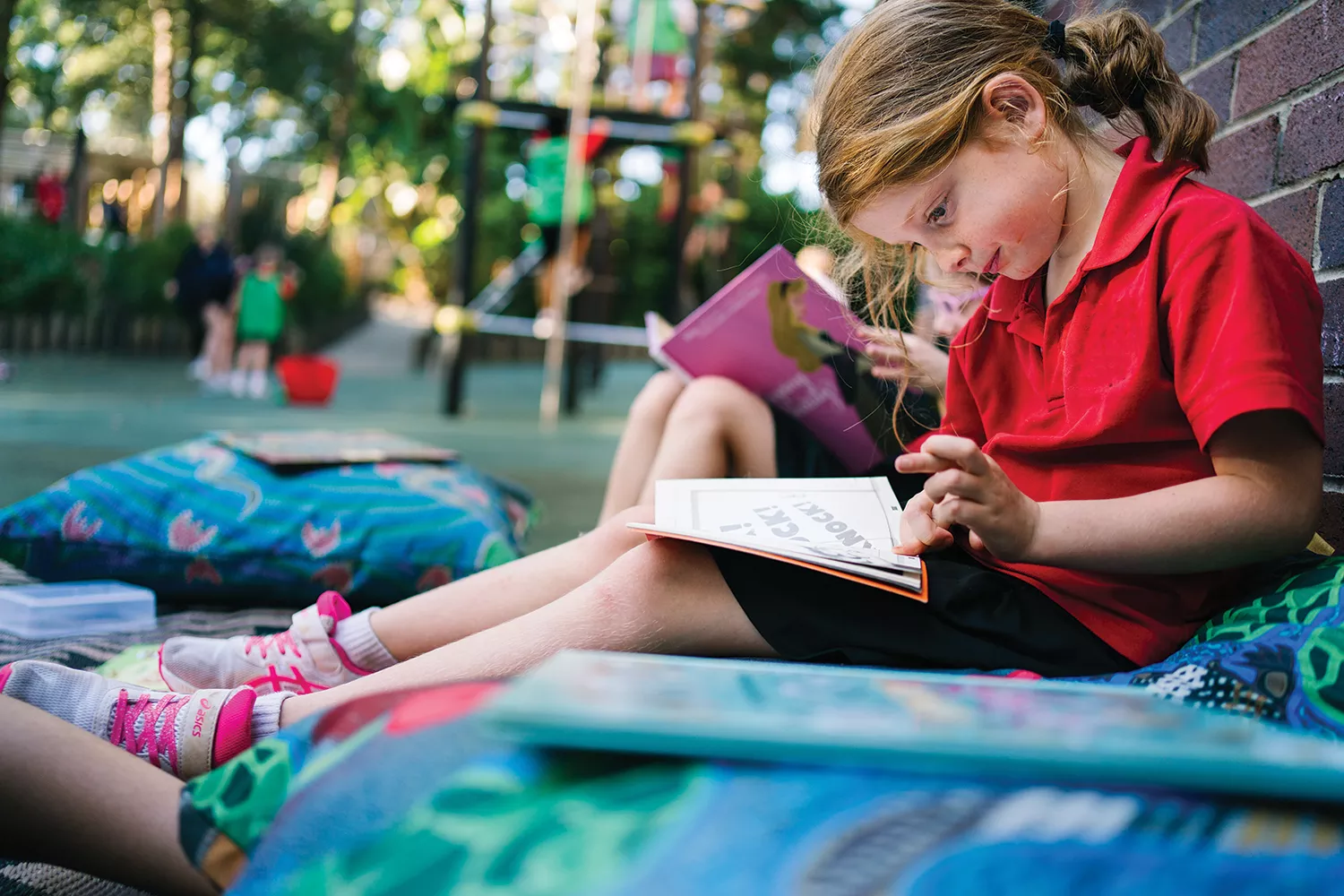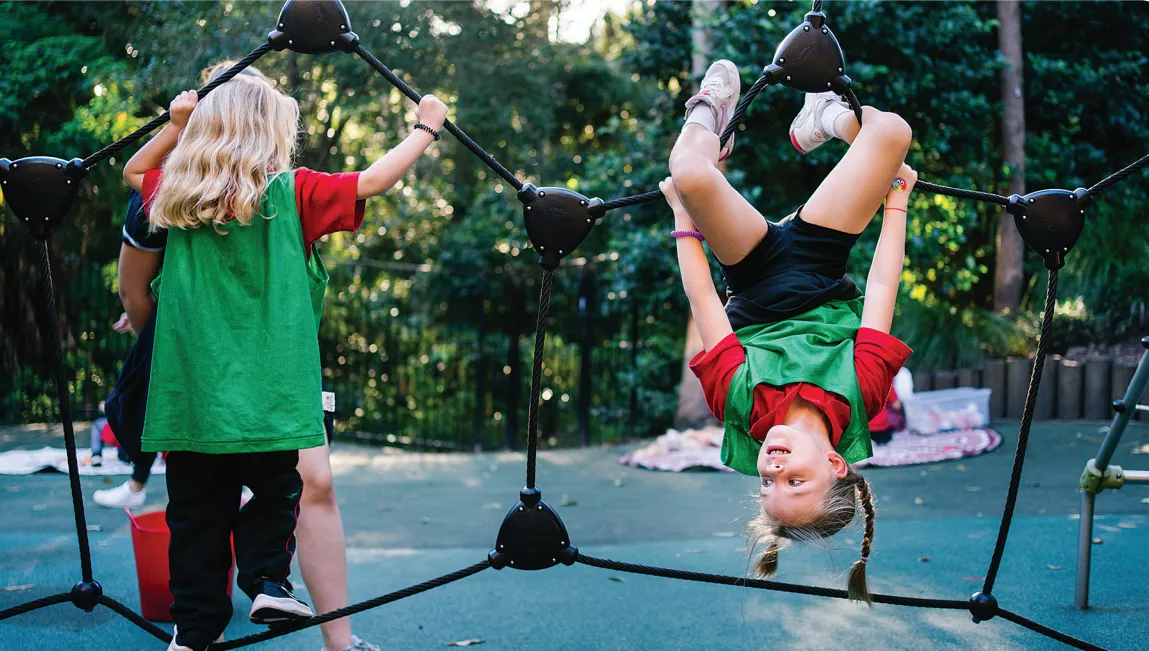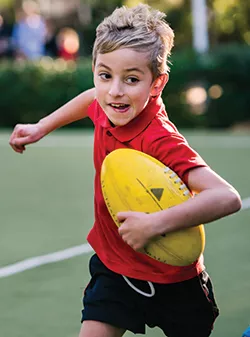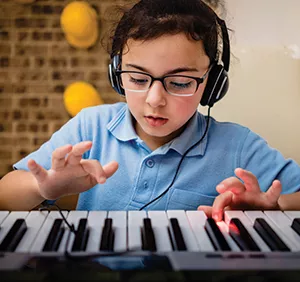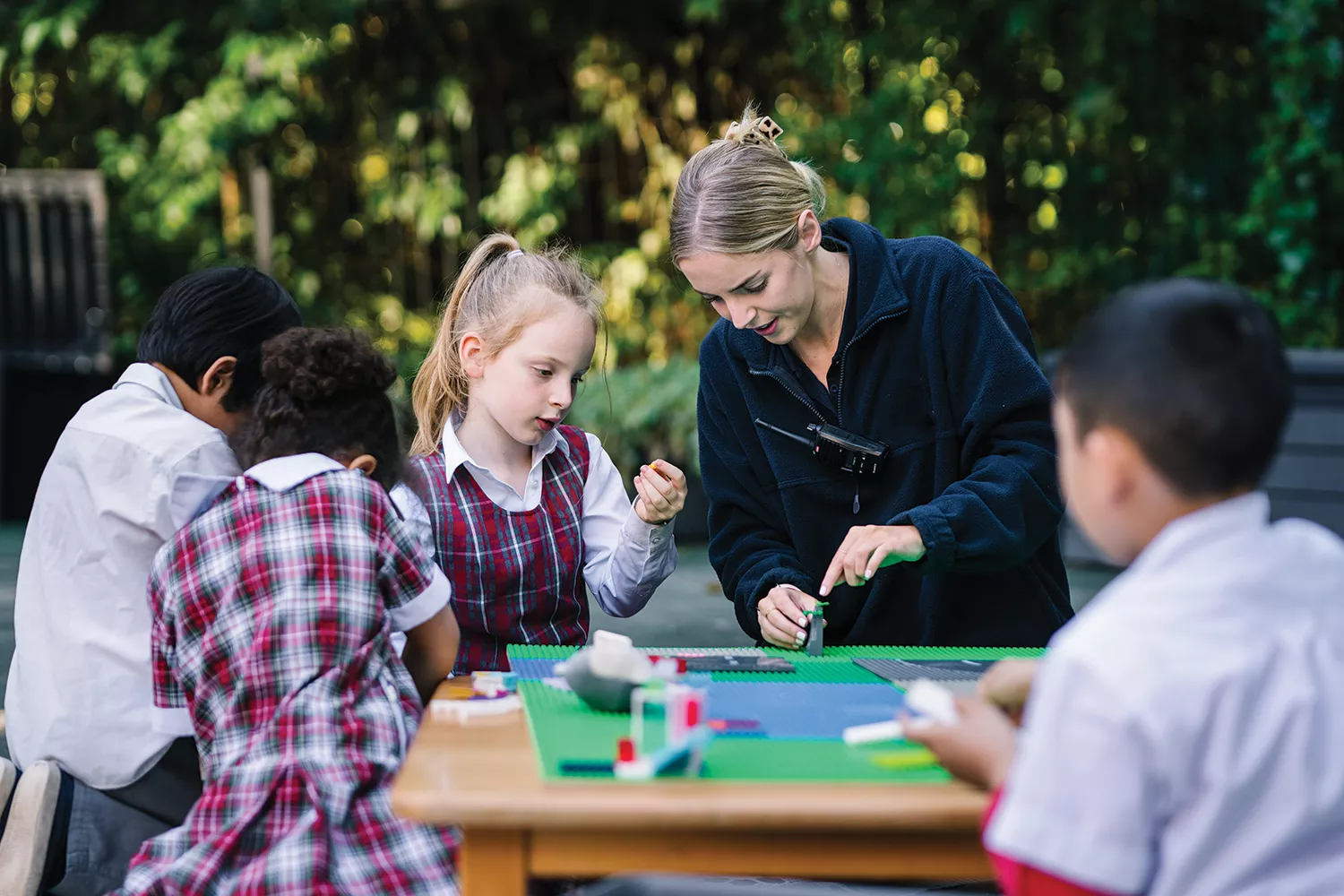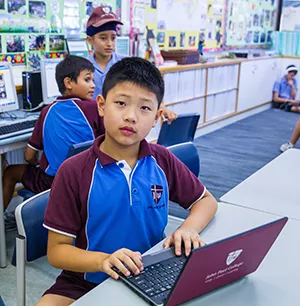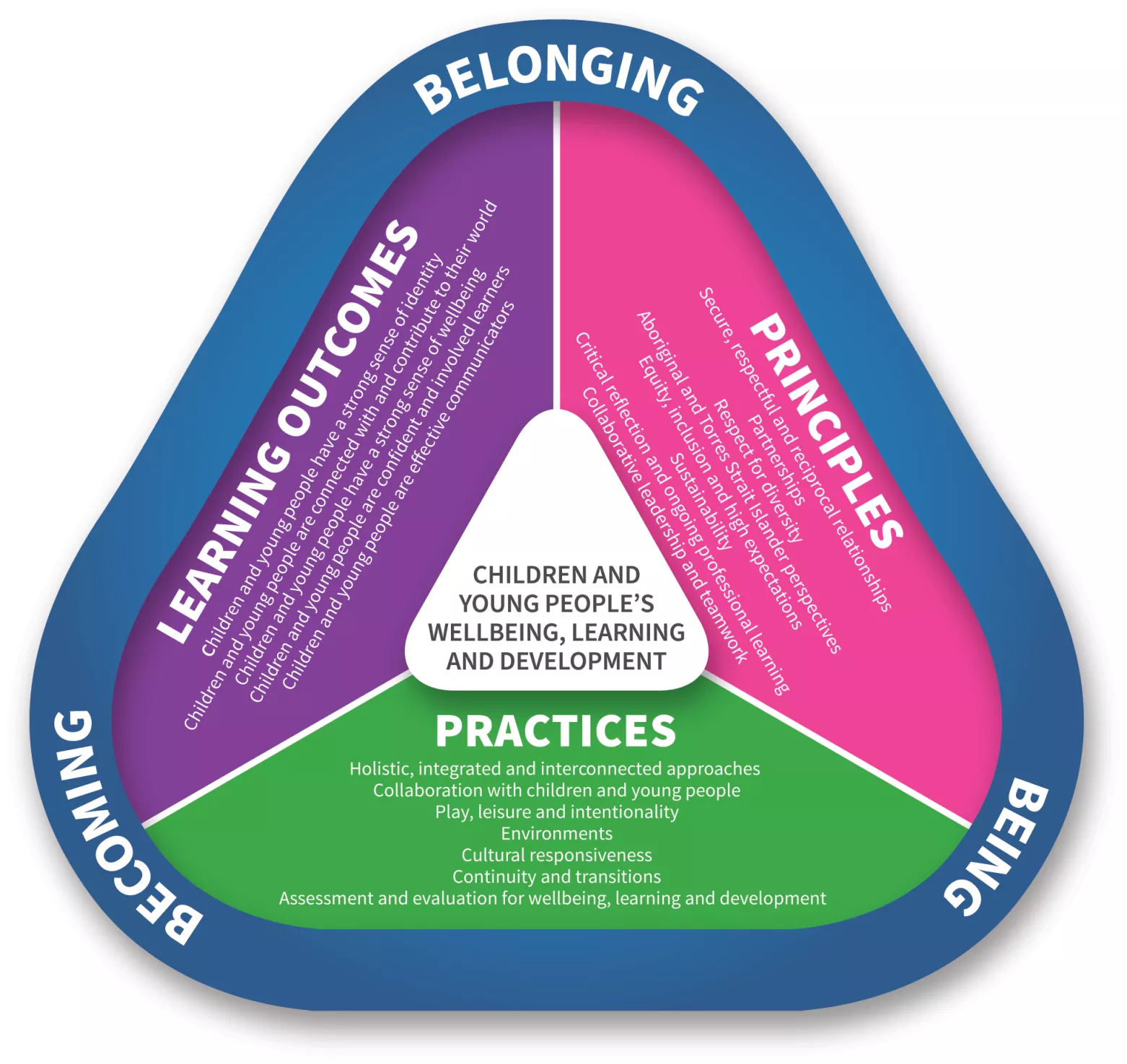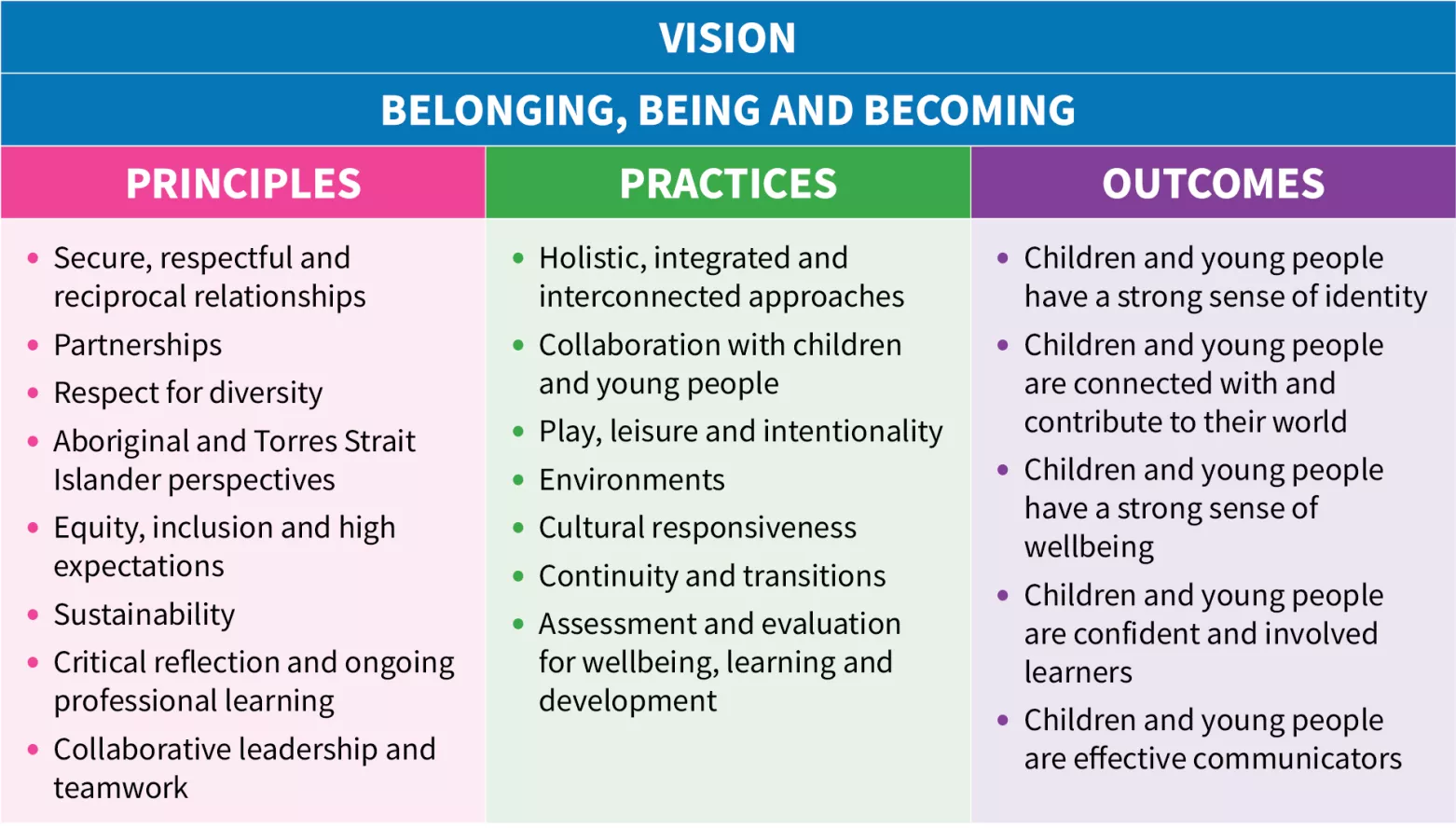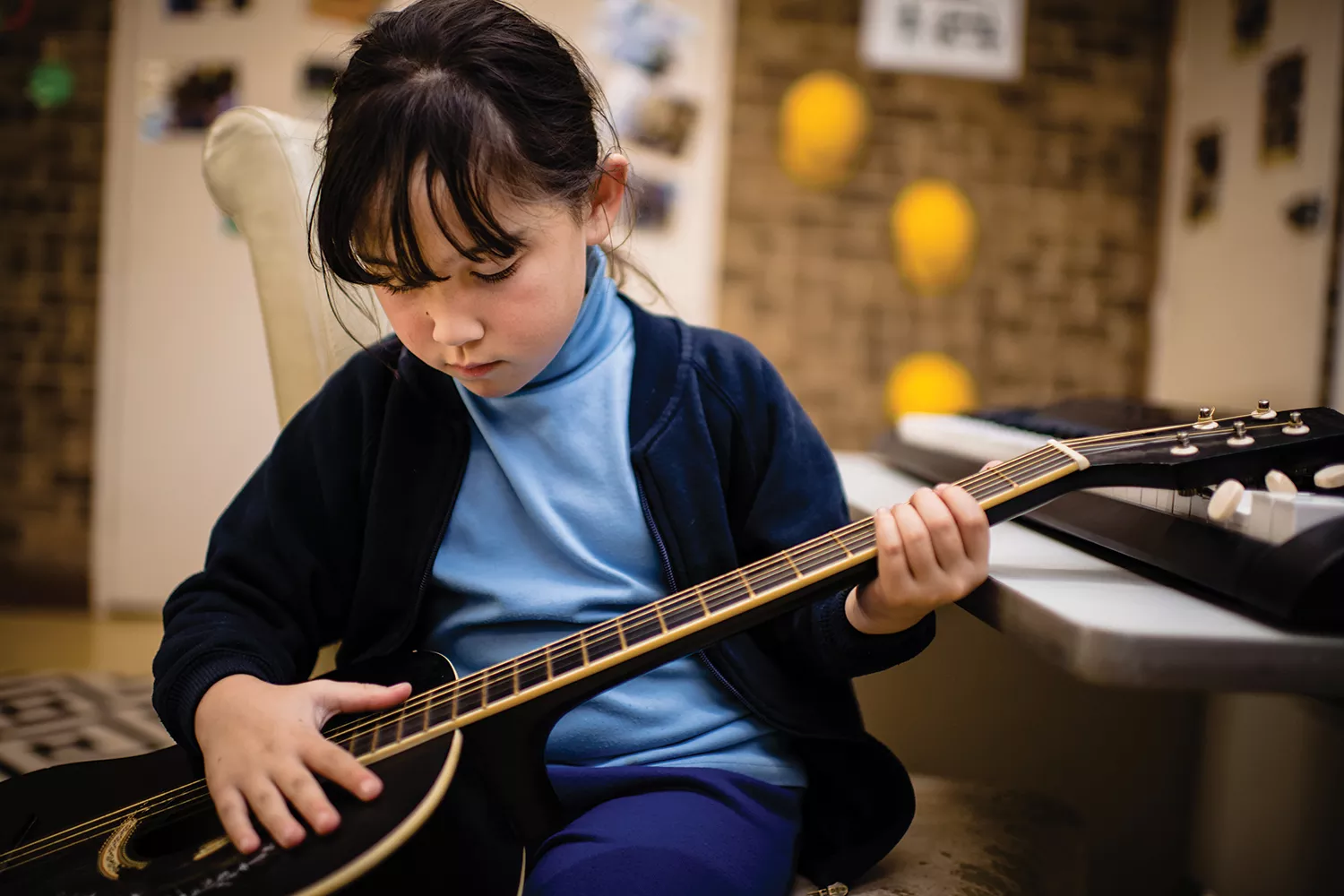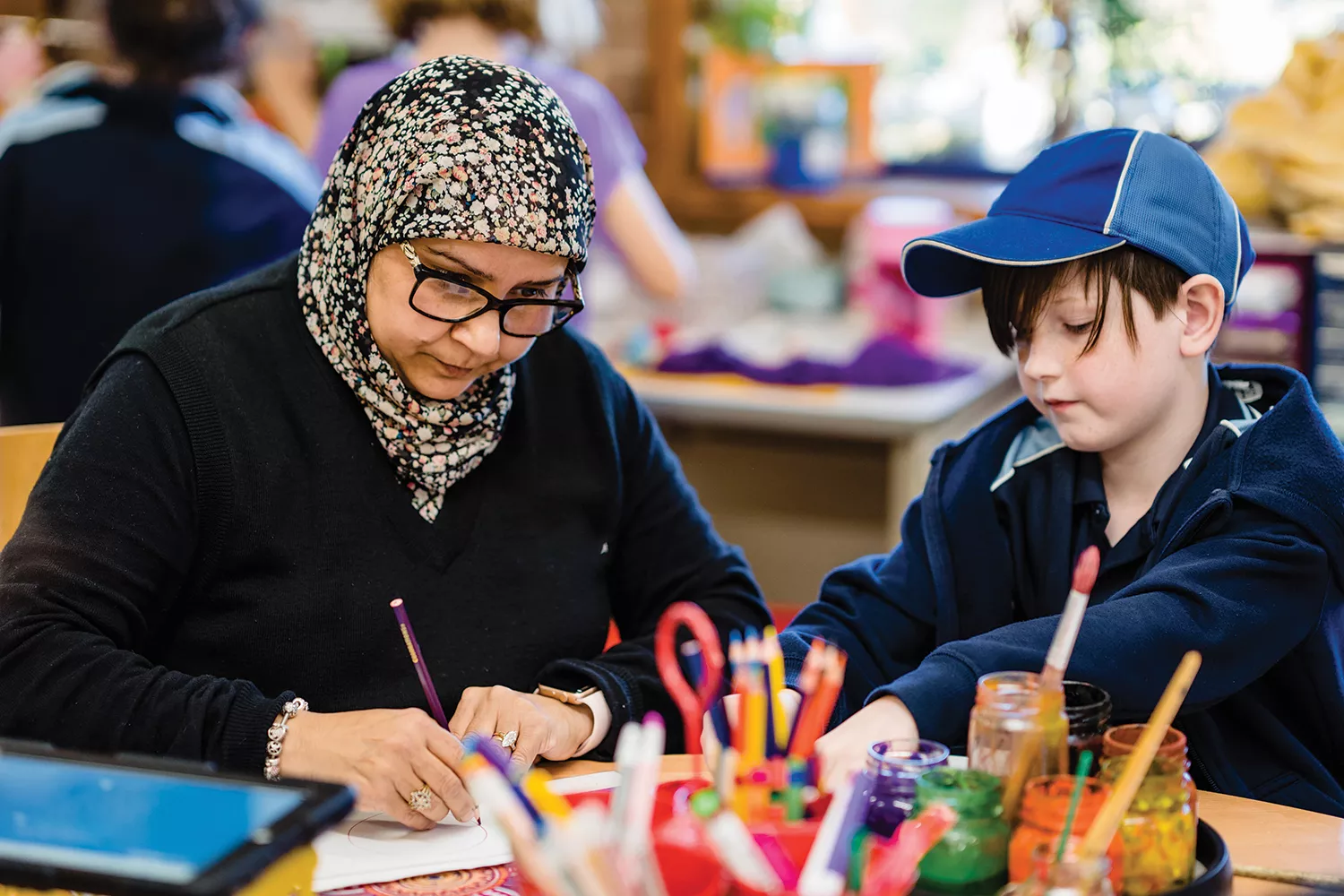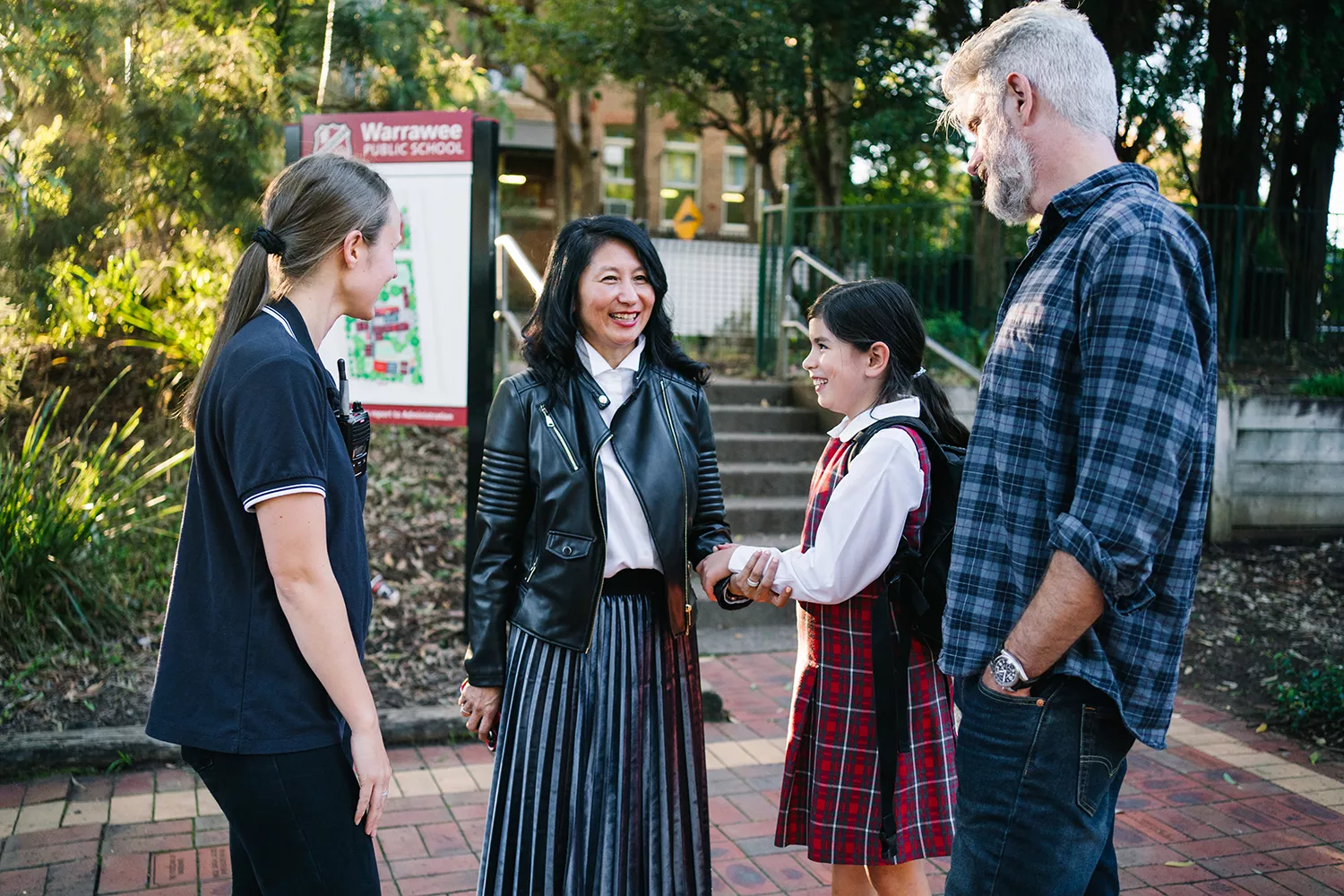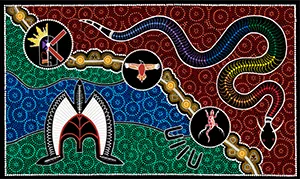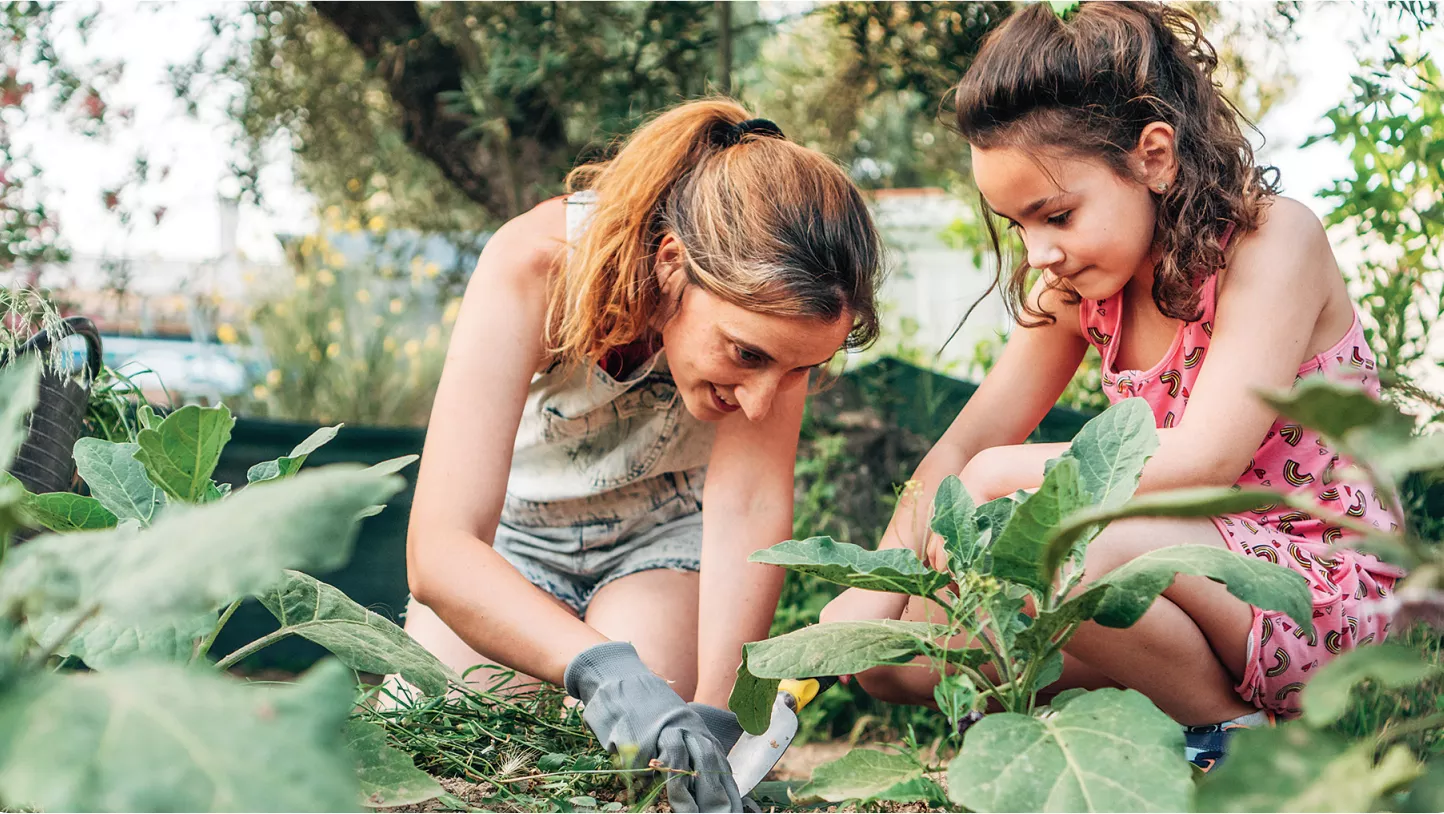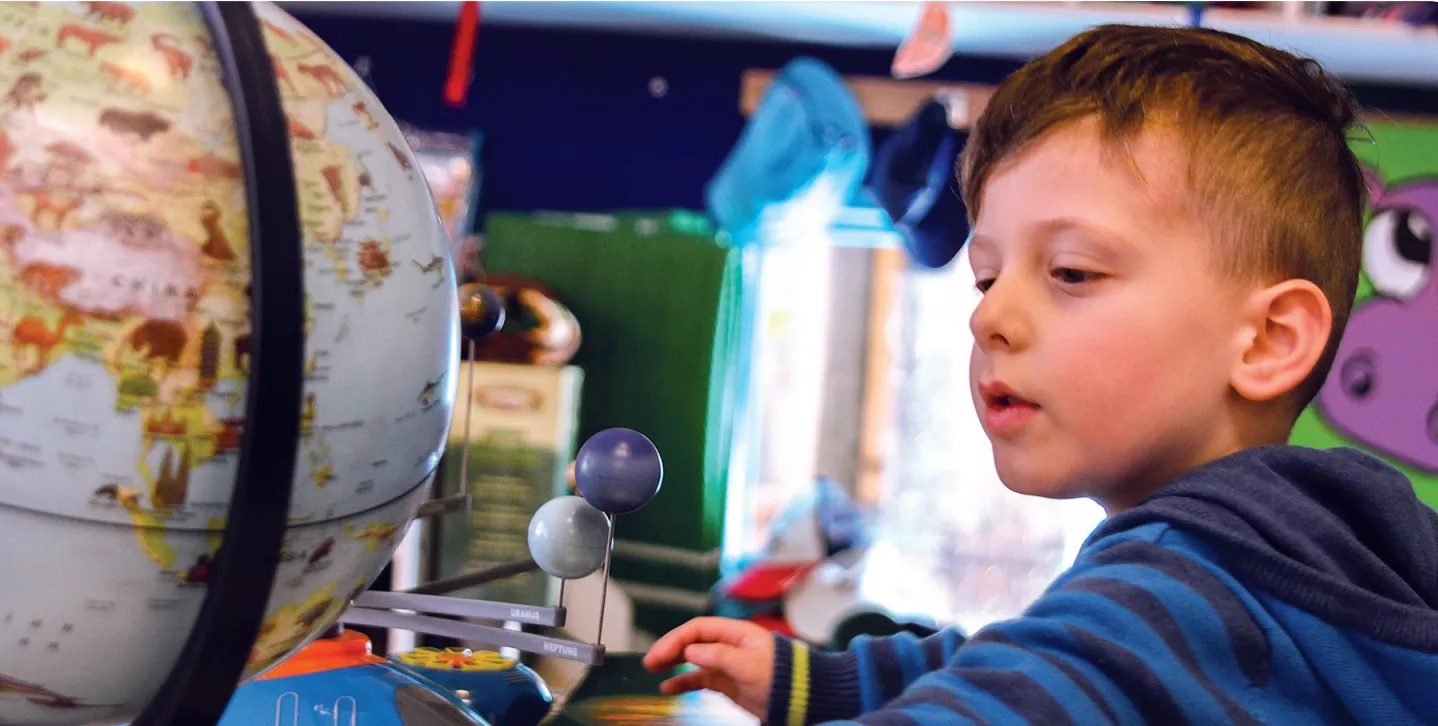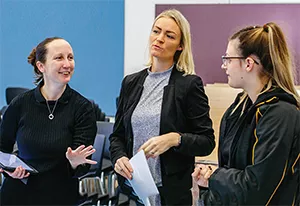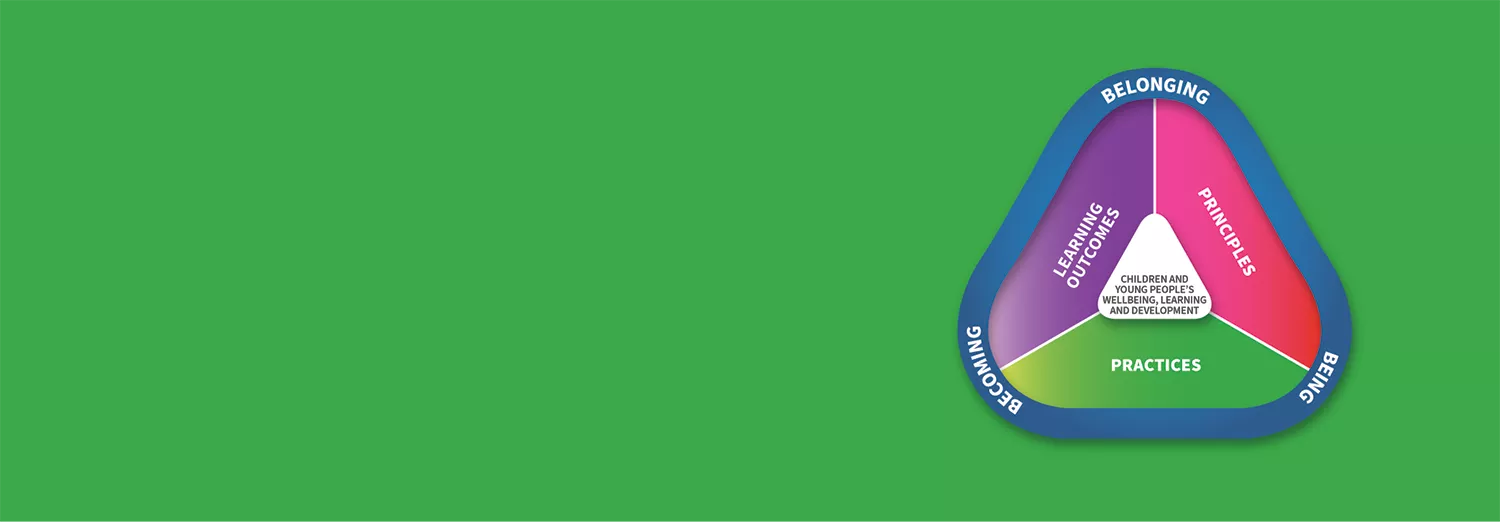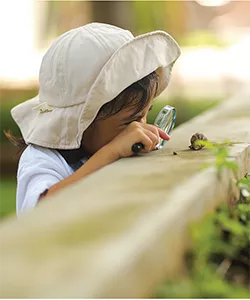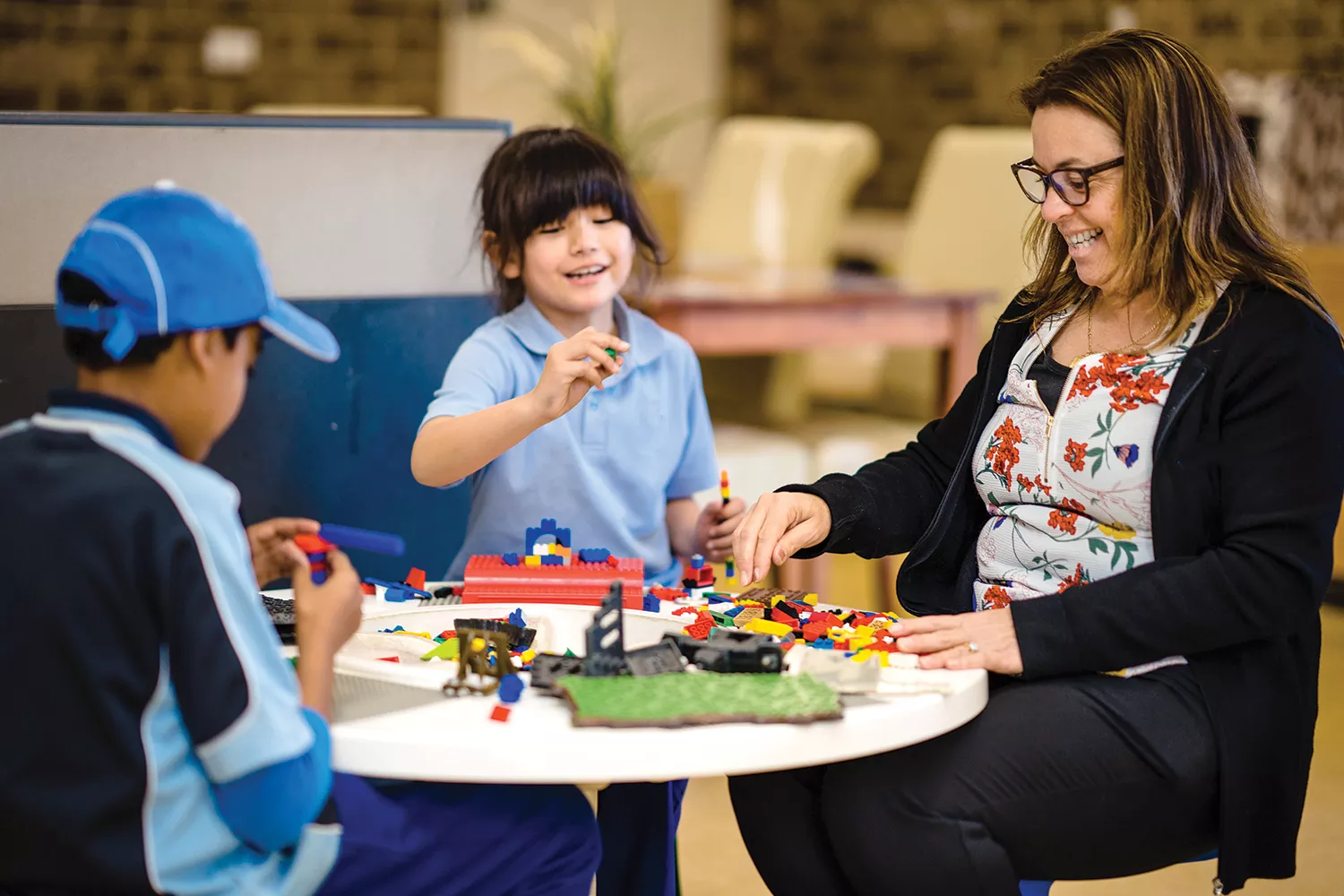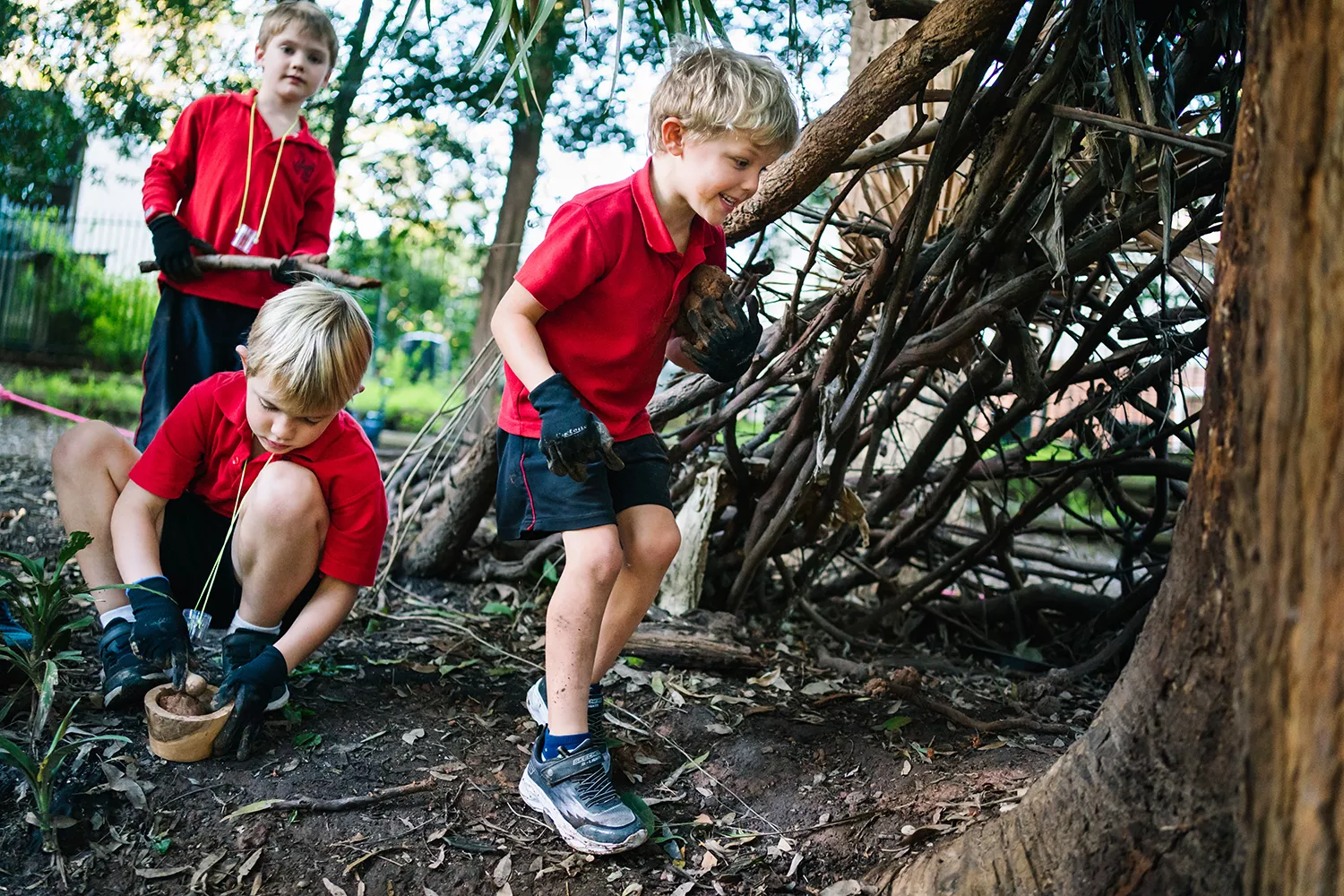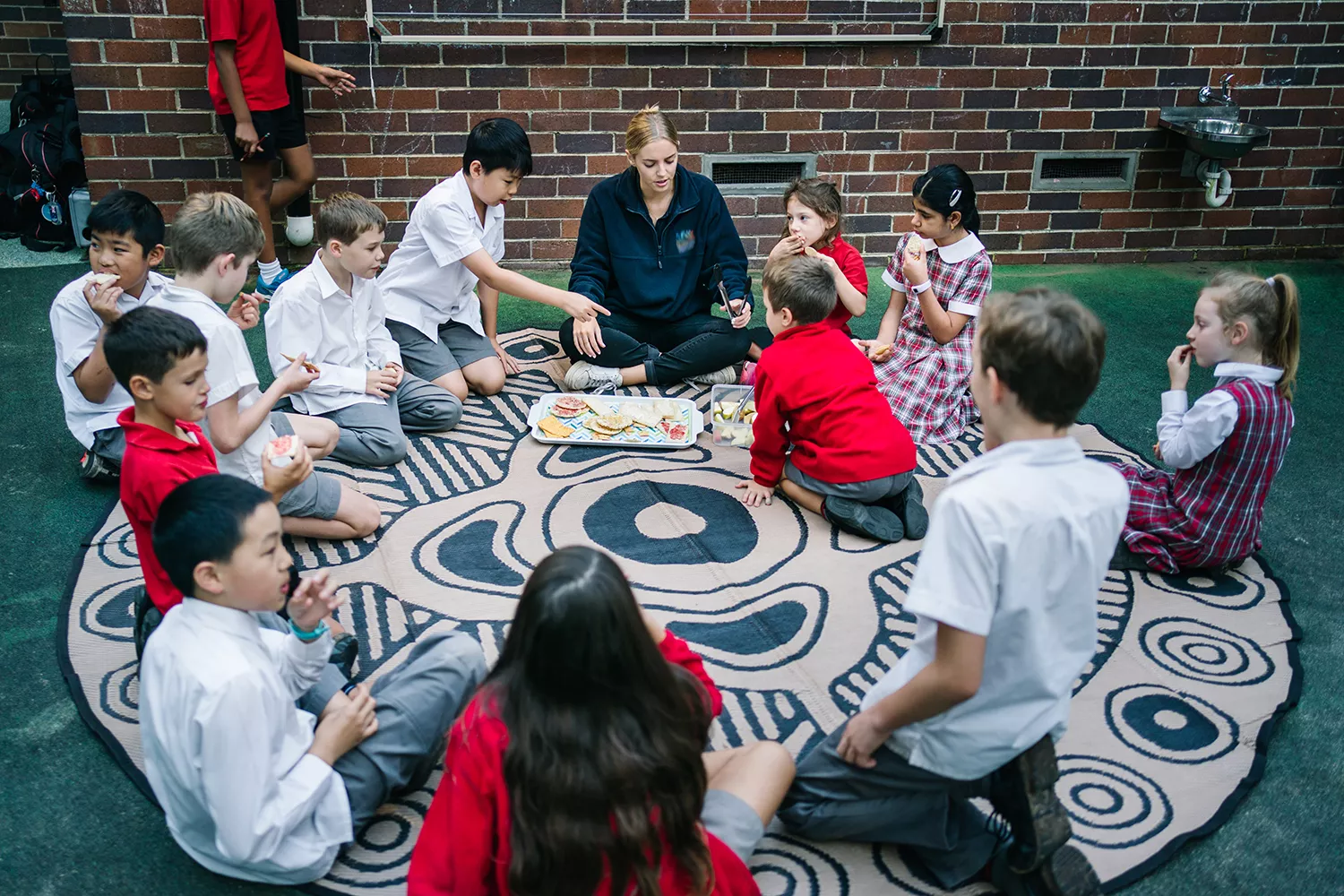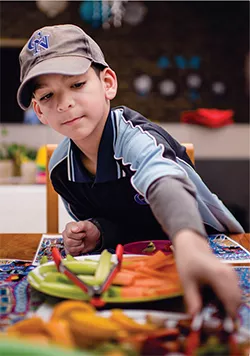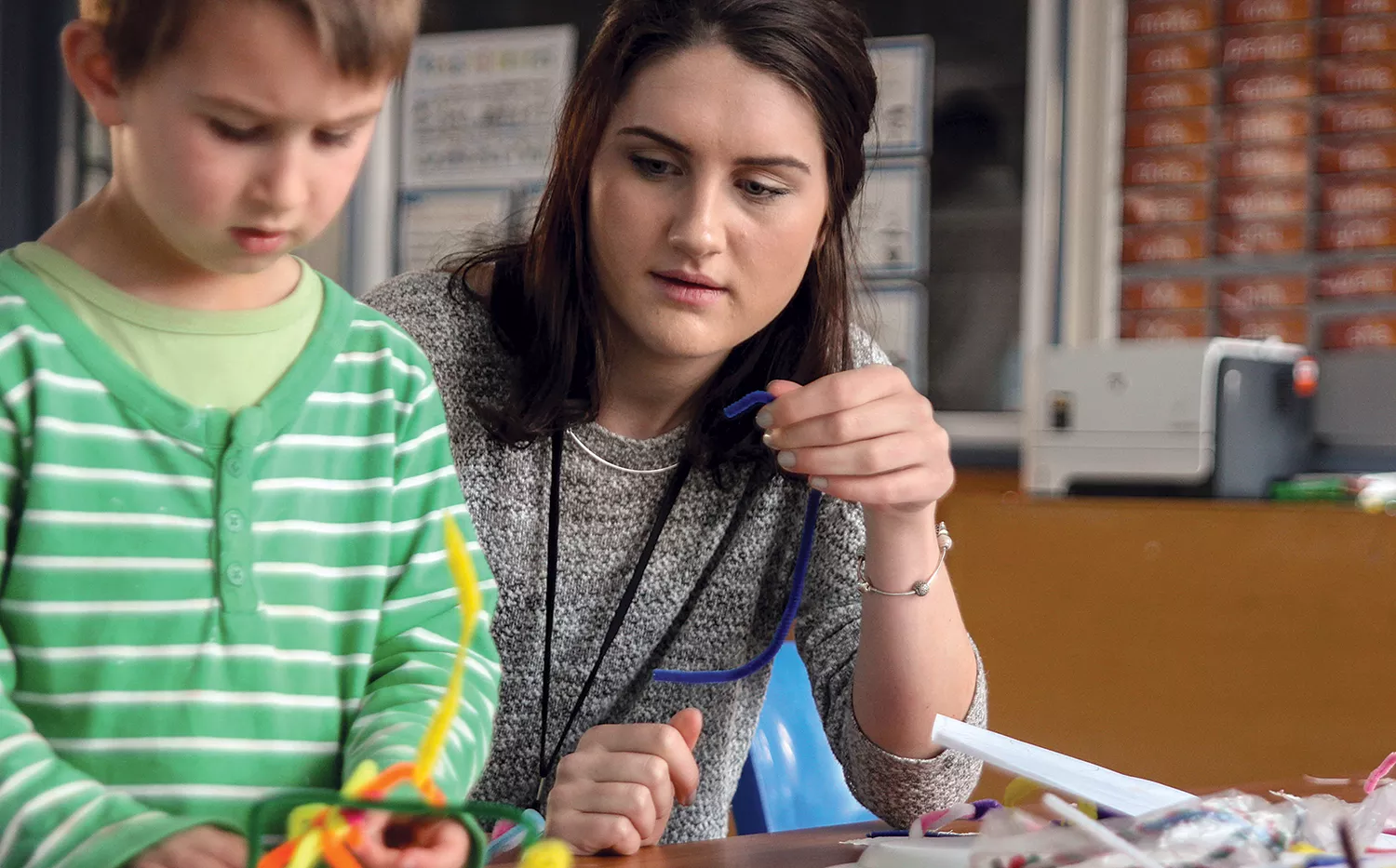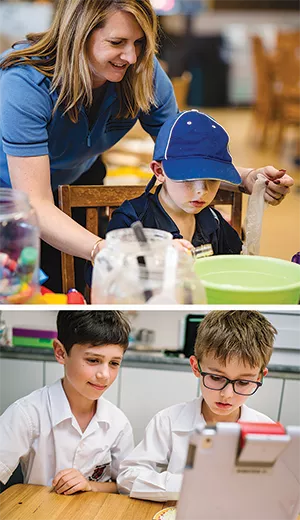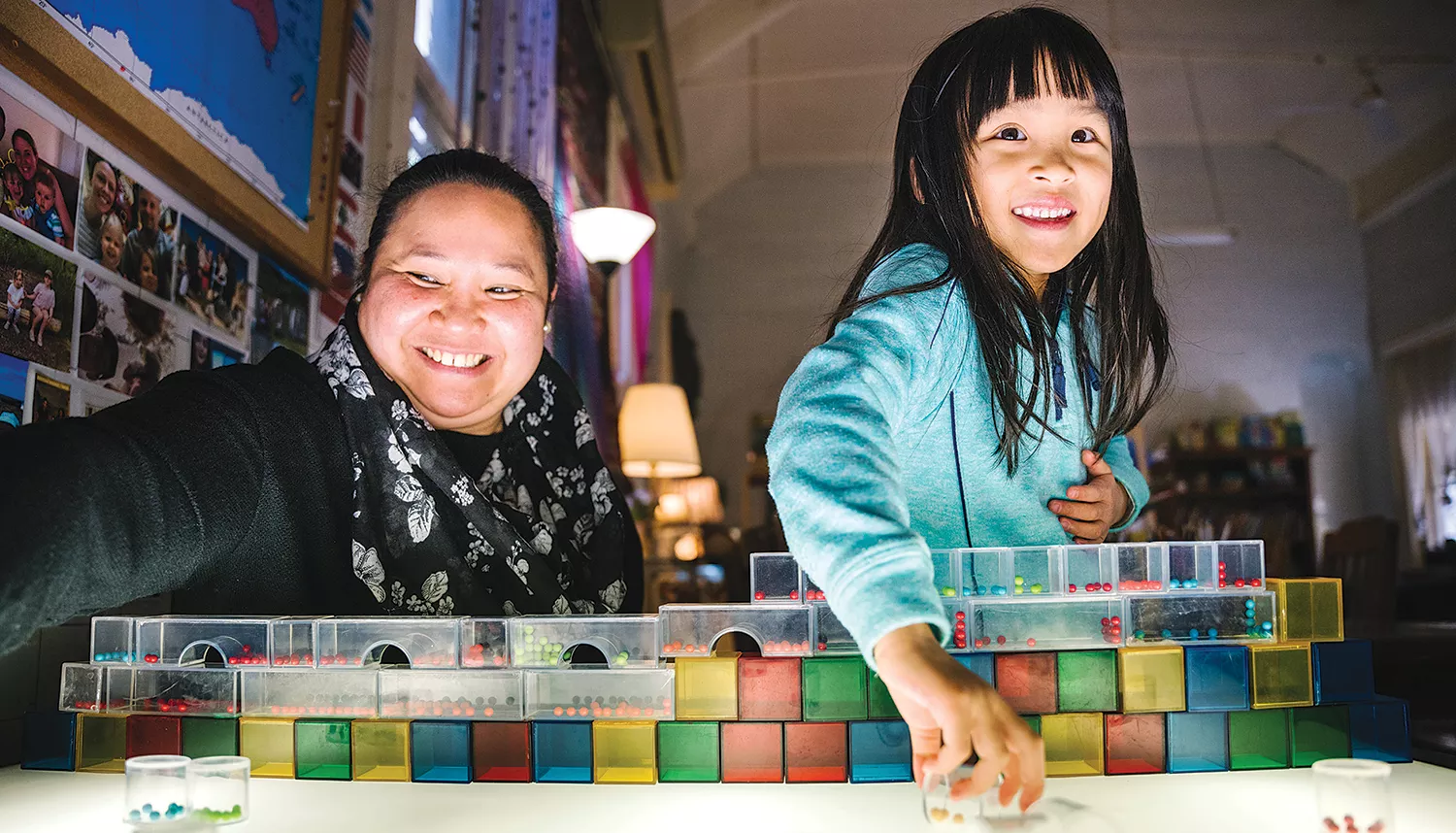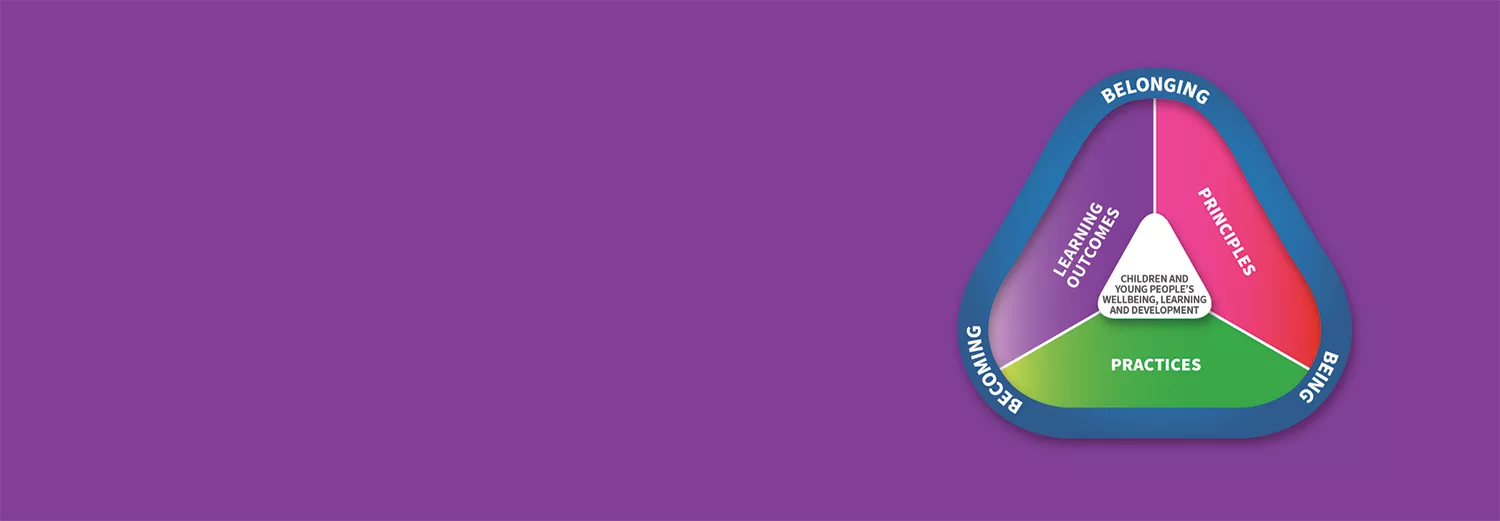MY TIME, OUR PLACE - FRAMEWORK FOR SCHOOL AGE CARE IN AUSTRALIA
My Time, Our Place: The Framework for School Age Care is the national approved learning framework under the NQF for school age children.
| We acknowledge the Traditional Owners and Custodians of the Lands across Australia. We also acknowledge and extend our respect to Elders, past and present. We recognise and celebrate the contributions of Aboriginal and Torres Strait Islander peoples as the First Peoples of Australia, including their role in the education and care of children. We also acknowledge and recognise the rich histories and diverse cultures of Aboriginal and Torres Strait Islander peoples, and the valuable contribution their diversity brings. |
|---|
(MTOP) INTRODUCTION
This is V2.0 of Australia’s national framework for school age care. The aim of My Time, Our Place: Framework for School Age Care in Australia (the Framework) is to assist educators to provide children and young people with opportunities to maximise their potential and develop a foundation for successful lifelong learning. The Framework has been designed for use by approved providers and school age care educators working in partnership with children and young people, their families and the community, including schools. It aims to extend and enrich children and young people’s wellbeing, learning and development in school age care settings.
The Framework draws on robust Australian and international evidence that confirms children and young people learn and develop the skills, knowledge and behaviours required for active citizenship in a wide range of settings. It has been developed with considerable input from children and young people, families, approved providers, educators and peak bodies across the school age care sector, researchers, as well as the Australian and state and territory governments and the Australian Children’s Education and Care Quality Authority.
The Human Rights Commission describes Australia as a vibrant, multicultural country. “We are home to the world’s oldest continuous cultures, as well as Australians who identify with more than 270 ancestries” (Australian Human Rights Commission 2019). In recognition of this and the guiding principles of the National Quality Framework, My Time, Our Place contributes to the realisation of Goal 1 and 2 of the Alice Springs (Mparntwe) Education Declaration (Education Council 2019, p. 4) that:
Goal 1: The Australian education system promotes excellence and equity. Goal 2: All young Australians become:
|
|---|
The Alice Springs (Mparntwe) Declaration commits governments to ensuring children learn about the diversity of Aboriginal and Torres Strait Islander cultures, and to seeing all Aboriginal and Torres Strait Islander children and young people thrive in their education and every facet of life. Contributing to this goal, the National Agreement on Closing the Gap led by the Coalition of Aboriginal and Torres Strait Islander Organisations and all Australian governments identifies the importance of promoting cultural wellbeing to enable all Aboriginal and Torres Strait Islander children and young people to achieve their potential. School age care services have a role in delivering this outcome and advancing Reconciliation in Australia.
As part of the National Quality Framework, My Time, Our Place supports the objectives and principles of the National Law and Regulations including the National Quality Standard. Recognising children and young people as competent and capable learners who have rights and agency, the Framework has a specific emphasis on play and leisure. The Framework identifies a shared Vision, Principles and Practices, and 5 Outcomes for children and young people’s wellbeing, learning and development. Together these elements inform the implementation of this national Framework by ensuring that necessary environments, facilities, staffing provisions, resources, leadership and management structures are in place.
Educators guided by the Framework will reinforce in their daily practice the principles laid out in the United Nations Convention on the Rights of the Child (the Convention) (United Nations 1989). The Convention states that all children and young people are guaranteed the right “to rest and leisure, to engage in play and recreational activities appropriate to the age of the child and to participate freely in cultural life and the arts” (Article 31, UN, 2005, p. 15). The Convention also recognises children and young people’s rights to be active participants in all matters affecting their lives and respects their family, cultural and other identities, and languages. Underpinned by a child-rights approach, the Framework supports implementation of the National Principles for Child Safe Organisations (Australian Human Rights Commission 2018). It also promotes children and young people’s safety, wellbeing and rights and responsibilities as active citizens.
The Framework acknowledges the importance of play and leisure in children and young people’s lives. Children and young people are challenged to be curious about what is of interest to them while at the same time developing self-identity and social competencies. Developing life skills and a sense of fun and enjoyment are emphasised. The Framework recognises the importance of social and emotional and communicative capabilities. Play and leisure form the foundation for ensuring all children and young people in all school age care settings engage in quality experiences for rich learning, personal development, wellbeing and citizenship opportunities.
(MTOP) A VISION FOR CHILDREN AND YOUNG PEOPLE’S LEARNING THROUGH PLAY AND LEISURE
| A vision: All children and young people engage in learning through play and leisure that promotes creative and confident individuals and successful lifelong learners. All children and young people are active and informed members of their communities, with knowledge of Aboriginal and Torres Strait Islander perspectives. |
|---|
In school age care settings educators collaborate with children and young people to provide play and leisure opportunities that are meaningful and support their wellbeing, learning and development. School age care settings pay attention to the capabilities and curiosities of individual children and young people within a context that promotes collaboration and active citizenship. They celebrate diversity with children and young people and their families, and the opportunities diversity brings to know more about the world. Children and young people in school age care settings have choice and control over their play, leisure and learning as they collaborate with educators and their peers to extend their life skills and develop citizenship.
From before birth children are connected to family, communities, culture and place. Their earliest development and learning takes place through these relationships, particularly within families, who are children and young people’s first and most influential educators. As children and young people participate in everyday life, they develop interests, curiosities and construct their own identities and understandings of the world. As children transition to school, their social worlds expand to include a wider range of relationships particularly with other children and young people of multiple age groups.
Children and young people’s learning in school age care settings complements their learning at home, school and in the community. In school age care settings, there is great importance placed on relationships and developing and strengthening children and young people’s talents and interests. Children and young people learn to know, to do, to be, to live together and to transform oneself and society (UNESCO). Educators understand that children and young people may come from diverse backgrounds and acknowledge this in each child and young person’s belonging, being and becoming.
The view of children and young people’s lives as characterised by belonging, being and becoming underpins the My Time, Our Place: Framework for School Age Care in Australia.
(MTOP) Belonging
Experiencing belonging – knowing where and with whom you belong – is integral to human existence. In school age care, and throughout life, relationships are crucial to a sense of belonging. Children and young people belong first to families, neighbourhoods and a global community. Belonging acknowledges children and young people’s interdependence with others and the basis of relationships in defining identities. Belonging is central to being and becoming in that it shapes who children and young people are now and who they can become.
(MTOP) Being
Childhood is a time to be, to seek and make meaning of the world. Being recognises the significance of the present, as well as the past in children and young people’s lives. It is about knowing themselves, building and maintaining relationships with others, engaging with life’s joys and complexities, and meeting challenges in everyday life. During the school age years children and young people develop their interests, curiosities and explore possibilities. School age care settings give children and young people time and place to collaborate with educators to organise activities and opportunities meaningful to them.
(MTOP) Becoming
Children and young people’s identities, knowledge, understandings, dispositions, capacities, skills, and relationships change during childhood. They are shaped by different events and circumstances. Becoming acknowledges children and young people’s ongoing learning and development. It emphasises the collaboration of educators, children and young people and families to support and enhance children and young people’s connections and capabilities, and for children and young people to actively participate as citizens.
The Framework conveys high expectations for all children and young people’s play and leisure experiences in school age care settings. It communicates these expectations through the following 5 Outcomes:
- Children and young people have a strong sense of identity
- Children and young people are connected with and contribute to their world
- Children and young people have a strong sense of wellbeing
- Children and young people are confident and involved learners
- Children and young people are effective communicators.
The Framework provides broad direction for school age care educators to ensure children and young people are supported, celebrated and connected to their community, taking account of their wellbeing, learning and development.
It guides educators in their professional decision-making and assists in planning, implementing and evaluating programs and practices in school age care settings. It also underpins the implementation of relational and place-based pedagogies and play and leisure experiences relevant to each local community and all children in the school age care setting. Relational pedagogy underpins the ways in which educators build trusting respectful relationships between children, families, other educators and professionals, as well as members of the community. Place-based pedagogy refers to an understanding that educators’ knowledge of the setting or context will influence how educators plan and practice.
The Framework is designed to inspire conversations, improve communication and provide a common language about promoting children and young people’s play, leisure and learning among children and young people themselves, their families, the broader community, school age care educators, teachers and other professionals.
(MTOP) Elements of the Framework
The Framework puts children and young people’s wellbeing, learning and development at the core and comprises interrelated elements: Vision, Principles, Practices and Outcomes (see Diagram 1). All elements are fundamental to pedagogy, and curriculum and program decision-making in school age care. A school age care curriculum encompasses all the interactions, experiences, routines and events, planned and unplanned, which occur in an environment designed to support and foster children and young people’s wellbeing, learning and development.
Children and young people are receptive to a wide range of experiences. What is included or excluded from the program affects how children and young people understand themselves, learn, develop and understand the world. The Framework is designed to be used in before and after school programs and vacation care programs. The program formats differ in the way in which they address the time children and young people spend attending school age care settings, however the Outcomes do not alter.
Educators working in collaboration with children and young people, and in partnership with families, teachers in schools, other professionals and community members, use the Vision, Principles, Practices and Outcomes to guide their planning for children and young people’s wellbeing, learning and development. Educators listen to and collaborate with children and young people to identify and assess strengths and curiosities, choose appropriate strategies and design environments to plan the program.
(MTOP) Children and young people’s learning
Play and leisure experiences constructed by children and young people, and supported by informed educators, promote children and young people’s dynamic, complex and holistic learning. Children and young people’s happiness, optimism and sense of fun are dispositions significant to their emotional and mental wellbeing and resilience. In school age care settings, children and young people’s sense of responsibility for their learning is co-determined. They develop a growth mindset and a positive attitude towards lifelong learning. Children and young people are actively involved in community building when they discuss common interests and participate in opportunities as citizens.
The diversity in family and community life in Australia means that school age children experience belonging, being and becoming in many ways. Children and young people bring their diverse experiences, home languages, culture, perspectives, expectations, knowledge and skills to their play, leisure and learning. Family, school and the wider community (including school age care and vacation care settings) provide diverse opportunities for children and young people to explore relationships and ideas, and build their capacities and skills.
Children and young people actively construct their own understandings and contribute to others’ learning. They recognise their agency, capacity to initiate and lead, and their rights to participate in decisions that affect them, including their play, leisure and learning.
Viewing children and young people as active participants and decision-makers opens possibilities for educators to move beyond pre-conceived expectations about what children and young people can do in play and leisure experiences. This requires educators to respect and work with children and young people’s unique qualities, diverse capabilities and curiosities. When children and young people are given choices and control, they experience connections between actions and consequences.
Educators build on the ways in which children and young people grow and learn.
Play and leisure experiences capitalise on children and young people’s interests, natural inclinations to be curious, explore and learn. Participation in these experiences:
- allows for the expression of personality and uniqueness
- offers opportunities for multimodal play that enhances thinking skills and lifelong learning dispositions such as curiosity, persistence and creativity
- enables children and young people to make connections between prior experiences and new learning and to transfer learning from one experience to another
- assists children and young people to develop and build relationships and friendships
- develops knowledge acquisition and concepts in authentic contexts
- builds a sense of identity
- integrates emotions, thinking and motivation that assists to strengthen brain functioning
- strengthens self-regulation, and physical and mental wellbeing.
Play or playful behaviour stimulate neuro-connectivity in the brain and playing contributes to feelings of social connection, wellbeing and a sense of accomplishment. In play and leisure experiences, children and young people’s sense of responsibility for their learning is co-determined.
Educators’ practices and the relationships they form with children and young people, have a significant effect on children and young people’s development of a strong sense of identity and wellbeing, which impacts their involvement and sense of success. Children and young people thrive when families, approved providers, educators, teachers in schools, other professionals and the wider community work together in partnership to support children and young people’s wellbeing, learning and development. Wellbeing and a strong sense of connection, optimism, resilience and engagement enable children and young people to develop a growth mindset and a positive attitude to learning. Relationships are strengthened when educators recognise and affirm children’s home languages and cultural identities, and when they create culturally secure and safe places for children and their families.
The Outcomes section of the Framework provides examples of evidence of children and young people’s wellbeing, learning and development and the educator’s intentional role of enriching and extending this through play and leisure.
(MTOP) ELEMENTS OF THE FRAMEWORK FOR SCHOOL AGE CARE
Diagram 1
This diagram shows the integrated connections of the Vision, Principles, Practices and Outcomes that centre on children and young people’s wellbeing, learning and development. The 3 themes of Belonging, Being and Becoming are included, thereby overlapping all these elements.
(MTOP) Pedagogy
The term pedagogy in this Framework refers to the professional practice of educators, especially those aspects that involve intentionally building and nurturing relationships, creating safe and inviting environments, program decision-making, teaching and learning. When educators establish respectful relationships with children and young people, and families, they are able to work together to construct relational and place-based pedagogies and programs relevant to children and young people in their local context. Using both these pedagogies supports curriculum decisions that include children and young people’s own ideas, curiosities and activities, allowing them to celebrate their own interests and friendships and express themselves in play and leisure in diverse ways.
Educators’ professional judgements are central to their active role in facilitating children and young people’s wellbeing, learning and development. In making professional judgements, they intentionally weave together their:
- professional knowledge and skills
- contextual knowledge of each child and young person, their families and communities
- understanding that relationships with children and young people and families are critical to creating safe and trusting spaces
- awareness of how their beliefs and values impact on children and young people’s wellbeing, learning and development
- knowledge and understanding of Aboriginal and Torres Strait Islander perspectives
- personal styles and past experiences
- understanding of the planning cycle.
Alongside their professional knowledge, educators draw on their creativity, imagination, insight and observations, and critical reflection on practice, to evaluate and adjust their practice to suit the time, place and context of the opportunities available. In making professional judgements, educators intentionally draw on a range of perspectives which may include:
- socio-cultural theories and ecological theories that emphasise the central role that families and cultural groups play in children and young people’s wellbeing and learning, the importance of respectful relationships and provide insight into social and cultural contexts of play and leisure
- developmental theories that focus on describing and understanding the influences on, and processes of children’s learning, development and wellbeing over time
- practice theories, such as affordance theory that asks educators to think, for example, about the possibilities the curriculum and environment offers children and young people
- ancestral knowledges as ways of knowing and understanding shared through history and culture, in the written, oral and spiritual traditions of Aboriginal and Torres Strait Islander peoples
- place-based sciences that foster community connections in ways that build on local (children, families, communities and educators) funds of knowledge (experiences and understandings) that assist in building thriving learners and communities
- critical theories that invite educators to challenge assumptions about curriculum and pedagogy, and consider how their decisions may affect children differently
- post-structuralist, post-colonial and feminist theories that offer insights into issues of power, equity and social justice in school age education and care settings.
Drawing on a range of perspectives and theories can challenge ways of seeing children and young people, facilitating learning, and encouraging educators, as individuals and with colleagues, to:
- investigate why they act in the ways that they do
- consider the voices of children and young people, their families and their communities in their decision-making and consider the consequences of their actions for children and young people’s experiences
- discuss and debate theories and other perspectives to identify strengths and limitations
- recognise how theories, world views and other knowledges assist in making sense of their work but can also limit their actions and thoughts
- consider who is included and who is excluded and silenced by ways of working
- find new ways of working fairly, justly and inclusively
- consider the ecosystems in which children live and learn.
(MTOP) PRINCIPLES
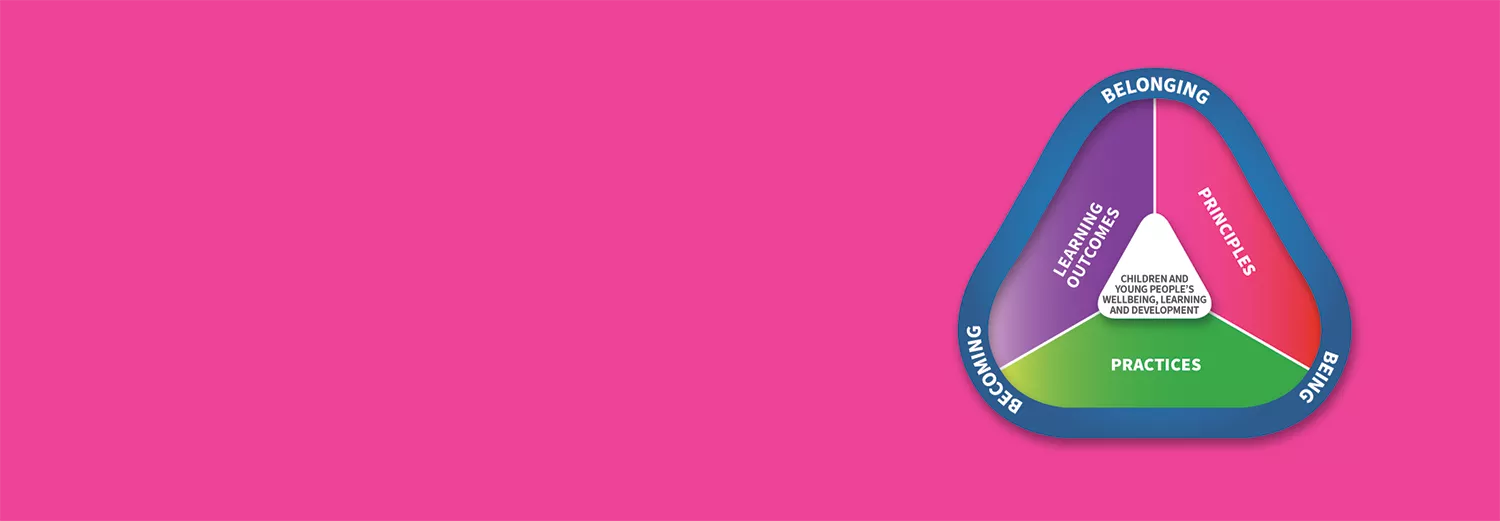
The following are 8 Principles that reflect contemporary theories and research evidence concerning children and young people’s play, leisure and learning and place-based and relational pedagogies. In school age care settings, the Principles underpin the Practices focused on collaborating with all children and young people to make progress in relation to the Outcomes. Educators consider ethical, socially just and inclusive principles for children and young people’s wellbeing, learning and development when they:
- build secure, respectful and reciprocal relationships
- develop partnerships
- are respectful of diversity
- embed Aboriginal and Torres Strait Islander perspectives
- commit to equity, inclusion and high expectations
- consider sustainability in all its forms
- engage in critical reflection and professional learning
- exercise collaborative leadership and work as a team.
(MTOP) Secure, respectful and reciprocal relationships
Mutually supportive relationships are very important in school age care settings. Secure, respectful and reciprocal relationships between children and young people, their peers, families and educators, provide the foundation upon which the community in school age care settings is established. When children and young people feel safe, secure, respected and given appropriate responsibility, they feel like valued members of the school age care ‘family’ or community. Children and young people’s experience of positive, caring relationships and interactions with others also plays a crucial role in healthy brain development. Children and young people who are supported to understand themselves in positive ways, experience a sense of belonging that nurtures the development of their self-esteem. Self-esteem is critical to children and young people’s capacity to develop positive images about themselves, their capabilities, curiosity, interests and personal future.
Research has shown the importance of relational and place-based pedagogies for children and young people’s optimal wellbeing, learning, and development. Educators who prioritise nurturing relationships through culturally safe and responsive interactions, provide children and young people with consistent emotional support. They value rituals and routines and ensure children and young people develop the skills and understandings they need to interact with others. They also help children to learn about their responsibilities to others, to support their own and others wellbeing, to appreciate their connectedness and interdependence as learners, and to value collaboration and teamwork. Exhibiting qualities of fairness, humour, sympathy and understanding, builds respectful and trusting relationships between children and young people, their families, colleagues and other professionals. Educators foster independence and initiative thereby nurturing children and young people’s agency and leadership skills.
(MTOP) Partnerships
Partnerships are based on the foundations of respecting each other’s perspectives, expectations and values, and building on the strength of each other’s knowledge and skills. School age children and young people are involved in partnerships in a range of experiences and settings. Educators recognise the diversity of children and young people with whom they work and the importance of connecting with families, community members and other professionals, including teachers in schools to support children and young people’s wellbeing, learning and development. Children and young people feel positive when there are strong links between these settings and outcomes are most likely to be achieved when educators work in partnership with these contributors.
Partnerships are based on effective communication which builds the foundations of respecting each other’s perspectives, expectations and values, and build on the strength of each other’s knowledge.
In genuine partnerships, educators collaborate with children and young people, families, other professionals and community members and schools. In genuine partnerships educators:
- value and respect each other’s knowledge and expertise
- value and respect each other’s contributions to and roles in children and young people’s lives
- build trust in each other
- act with empathy and sensitivity when children and young people and families are experiencing adversity
- learn about other ways of knowing, being, doing and thinking
- communicate and share information in ways that others understand
- share insights and perspectives with and about each child and young person
- acknowledge the diversity of families and their aspirations for their children and young people
- engage in shared decision-making to support each child and young persons’ wellbeing, learning and development.
Educators recognise the diversity of families and that families are children and young people’s first and most influential teachers. They create a welcoming and culturally safe environment where all children and young people and families are respected regardless of background, ethnicity, languages spoken, religion, family makeup or gender. Educators, children and families collaborate about program decisions to ensure that experiences are relevant and meaningful. Ethical partnerships are formed when information is shared responsibly, and educators take safety precautions to ensure children and young people’s right to privacy and protection. Educators know children and young people engage with popular culture, media and digital technologies so they build partnerships with families and others to keep children and young people safe and families aware of e-safety information.
Knowing that some children and young people may not have experienced safe and supportive home environments, educators enact trauma informed practices. In doing so, they engage with families, teachers in schools and other professionals to enhance the wellbeing, learning and development of these children and young people and as part of this educators engage in information sharing and record keeping.
Educators recognise the components of the ecological systems that surround the lives of children and young people. They recognise the partnerships with schools and other professionals. Educators also recognise and explore experiences in the wider community from both relational and place-based perspectives. These community partnerships fostered in the school age care program shape children and young people’s knowledge and dispositions for active citizenship.
These partnerships offer opportunities to explore the potential in everyday events, rituals, routines, play and leisure to ensure active participation and engagement in these experiences is inclusive of children and young people with diverse backgrounds and family structures.
(MTOP) Respect for diversity
There are many ways of living, being and of knowing. Children and young people are born belonging to a culture, which is not only influenced by traditional practices, heritage and ancestral knowledge, but also by the experiences, values and beliefs of individual families and communities. Being aware of and understanding diversity in school age care means considering the context of family practices, values and beliefs. Educators endeavour to understand the histories, cultures, languages, spiritual beliefs, traditions, child rearing practices and lifestyle choices of families so they can better support children and young people in their care. Educators build culturally safe and secure environments for all children and young people and their families. They value children and young people’s unique and diverse capacities and capabilities and affirm different cultural ways of knowing, being and doing.
Educators recognise that diversity contributes to the richness of our society and provides a valid evidence base about ways of knowing. For Australian children and young people, it also includes promoting greater understanding of Aboriginal and Torres Strait Islander ways of knowing and being and actively working towards Reconciliation.
When educators respect the diversity of families and communities, and the aspirations they hold for their children and young people, they can nurture and foster children and young people’s wellbeing, learning, and development. They make program decisions that uphold all children and young people’s rights to have their cultures, identities, languages, capabilities and strengths acknowledged and valued, and respond to the complexity of children and young people’s and families’ lives.
Educators think critically about opportunities and dilemmas that can arise from diversity and take action to redress unfairness. They provide opportunities for children and young people to consider similarities and difference and consider interdependence and citizenship.
(MTOP) Aboriginal and Torres Strait Islander perspectives
Providing opportunities for Aboriginal and Torres Strait Islander children and young people to see themselves, their identities and cultures reflected in their environment is important for growing a strong identity. Embedding Aboriginal and Torres Strait Islander perspectives in all educators’ philosophy and practice is a key tool to advance Reconciliation. This also contributes to the Closing the Gap commitments and fulfilling every Australian child’s right to know about Australia’s First Nations’ histories, knowledge systems, cultures and languages. Embedding Aboriginal and Torres Strait Islander perspectives is a shared responsibility of approved providers, educators, and other professionals working in early childhood educational settings, regardless of whether Aboriginal and Torres Strait Islander children and families are enrolled in that setting.
Aboriginal and Torres Strait Islander peoples are the longest surviving Indigenous culture in the world and the custodians of this land. Their knowledge systems, traditions, ceremonies, lore and culture have survived for over 60,000 years. Relationships and continual connections to Country and community are at the heart of who they are and the contributions of Aboriginal and Torres Strait Islander people – past and present – should be acknowledged and valued in children and young people’s learning.
Educators think deeply and seek assistance where possible, through engaging with Aboriginal and Torres Strait Islander people, about how to embed Aboriginal and Torres Strait Islander perspectives in the philosophy of the setting, their planning and implementation of curriculum. They have a responsibility to create culturally safe places, working in intercultural ways through pedagogy and practice. An intercultural space is created when educators seek out ways in which Western and Aboriginal and Torres Strait Islander knowledge systems work side by side.
Educators grow their knowledge of kinship systems and cultural connections in their local communities so they can build engaging reciprocal relationships between services and community. Acknowledging the strengths and capabilities of Aboriginal and Torres Strait Islander families while supporting wellbeing assists in reinforcing and affirming a positive sense of identity for their children.
The history and culture of Aboriginal and Torres Strait Islander peoples are respectfully and truthfully reflected through community involvement and culturally sensitive practices.
Embedding Aboriginal and Torres Strait Islander knowledges and perspectives encourages openness to diverse perspectives, enhances all children’s experiences and assists in the authentic advancement of Reconciliation. It is a commitment to children and young people learning about what has come before and working together for what is to come.
*ARTWORK: Lifelines and Bloodlines by Chad Briggs
(MTOP) Equity, inclusion and high expectations
Educators who are committed to equity recognise that all children and young people have the right to participate in inclusive education and care, regardless of their circumstances, strengths, capabilities or diverse ways of doing and being. They create inclusive learning environments and adopt flexible and informed practices, including making reasonable adjustments to optimise access, participation and engagement in the program. This supports wellbeing and positive outcomes for children and young people in all their diversities. Reasonable adjustments1 are the measures or actions taken by approved providers and educators to assist the meaningful participation of children and young people with disabilities or experiencing barriers to learning. Educators nurture children and young people’s optimism, happiness and sense of fun and support their friendships and interactions with each other.
Educators engage in critical reflection, challenge practices that contribute to inequities and make program decisions that promote genuine participation and inclusion. To support all children and young people’s inclusion, they recognise and respond to barriers that some children and young people face, including attitudinal and practical barriers. Such barriers can be related to disability, family diversity, cultural and linguistic diversity, neurodiversity and children and young people living through trauma and adversity and make reasonable adjustments to support inclusion.
In inclusive learning environments, educators view all children and young people as competent and capable and hold high expectations for them. They strive to provide all children and young people with an equitable and participatory environment and experiences to promote their learning and wellbeing. In doing this, educators recognise that equitable means fair, not equal or the same, and that some children and young people may need greater access to resources and support to participate in programs. By developing their professional knowledge and skills, and working in partnership with children and young people, families, communities, teachers in schools and other professionals, approved providers and educators continually strive to find equitable and effective ways to ensure that all children and young people have opportunities to achieve the Outcomes and to flourish.
(MTOP) Sustainability
Humanity and the planet we share with all living things faces some big challenges. Educators and children have important and active roles to play in creating and promoting sustainable communities.
Broadly defined sustainability spans environmental, social, and economic dimensions which are intertwined. Environmental sustainability focuses on caring for our natural world and protecting, preserving and improving the environment. Social sustainability is about inclusion and living peacefully, fairly and respectfully together in resilient local and global communities. Economic sustainability refers to practices that support economic development without negatively impacting the other dimensions. This includes a focus on fair and equitable access to resources, conserving resources and reducing consumption and waste.
Adopting this broader definition helps to meet the needs of the present without compromising the ability of future generations to meet their own needs. In sustainable communities, the requirements of humans, animals, plants, lands and waters can be met now and for generations to come.
Educators recognise children and young people’s avid interest in their world, their ability to engage with concepts of sustainability and their capacity to advocate and act for positive change. Children and young people’s agency and their right to be active participants in all matters affecting their lives are supported. Further, children and young people’s understanding of their citizenship, rights and responsibilities as members of local and global communities is built through meaningful experiences.
Thinking about sustainability means thinking about the future and acting to create healthy, just and vibrant futures for all. Educators encourage children and young people to develop appreciation of the natural world, understand our impact on the natural world, and the interdependence between people, animals, plants, lands and waters. Sustainable practices are created with children and young people, and they are supported to take an active role in caring for the environment and to think about ways they can contribute to a sustainable future. Recognising that Aboriginal and Torres Strait Islander peoples have looked after Country for the past 60,000 years, educators, children and young people learn about Aboriginal and Torres Strait Islander history, culture and rich sustainable practices.
Educators provide opportunities for children and young people to learn about all the interconnected dimensions of sustainability, understanding that sustainability goes beyond learning in nature and being involved in nature conservation. Children and young people are supported to appreciate that sustainability embraces social and economic sustainability – as well as environmental sustainability – and to engage with concepts of social justice, fairness, sharing, democracy and active citizenship.
(MTOP) Critical reflection and ongoing professional learning
Educators continually seek ways to build their professional knowledge and skills and develop learning communities. They are co-learners with children and young people, families and community, and value the continuity and richness of local knowledge shared by community members, including Aboriginal and Torres Strait Islander Elders.
Reflection and critical reflection are 2 terms often used interchangeably but are different practices. Reflection involves educators thinking intentionally about their own and others’ practices, with certain aims or goals in mind. Critical reflection is a meaning-making process that involves a deeper level of thinking and evaluation. It requires engagement with diverse perspectives such as philosophy, theory, contemporary knowledge, ethics and practice and then evaluating these in context. Such a critical reflection process leads to pedagogical decisions and actions that are transformative. As professionals, educators collaboratively explore, identify and evaluate diverse perspectives with respect to their settings.
This includes awareness of one’s personal and professional self. In this way, critical reflection informs future practice that demonstrate an understanding of educators’ own practice and each child’s wellbeing, learning and development and have implications for equity and social justice.
Critical reflection is a key practice that involves close examination of all aspects of events, practices and experiences from diverse perspectives. Educators can frame their critical reflection within a set of overarching questions, developing more specific questions for particular areas of enquiry. Overarching questions to guide critical reflection might include:
- What are our understandings of each child, their culture and context?
- How do these understandings shape our work?
- What questions do we have about our work? What are we challenged by? What are we curious about? What are we confronted by in relation to our own biases?
- What theories, philosophies and understandings shape and assist our work?
- In what ways – if any – are the theories, knowledges, and world views that we usually draw on to make sense of what we do limiting our practice?
- What other theories, knowledge and world views could help us to make sense of what we have observed or experienced? How might those theories, knowledge and world views shape what we see and affect our practice?
- Who is advantaged/included when we work in this way? Who is disadvantaged, excluded or silenced? How will children and young people benefit?
A robust culture of critical reflection is established when educators as a team, as well as children and young people and families, are all involved in an ongoing cycle of review. Current practices are discussed, debated and evaluated, and new ideas generated. This approach supports educators to question established practices and think about why they work in particular ways. Educators can critically reflect on aspects such as program quality, environment design, equity and children and young people’s wellbeing. Educators who are critically reflective are also committed to their own ongoing professional learning and development, actively seeking out opportunities that develop capabilities, as well as collaborating with their colleagues on aspects of practice.
As professionals, educators are committed to lifelong learning and seek out opportunities to strengthen their professional knowledge and skills to support continuous quality improvement in practice. Working in collaboration with colleagues, they identify and negotiate learning priorities, reflect on how they learn best, and look for evidence-informed learning experiences that support deep learning, critical reflection and practice change. Educators recognise that ongoing learning can take many forms. This may include professional learning experiences within settings, for example, professional conversations within teams, coaching and mentoring, professional reading, practitioner inquiry and participating in collaborative research projects. It may also include learning opportunities offered by others, for example, pursuing further study, attending professional conferences and completing professional learning programs. Within school age care settings, team members share new knowledge and skills gained through professional learning experiences and encourage and support the ongoing learning of others.
(MTOP) Collaborative leadership and teamwork
All educators exercise aspects of leadership in their daily work with children, young people, families and colleagues. Educators lead their own ethical practice as they take professional and personal responsibility for their actions and the decisions they make. Collaborative leadership and teamwork require attention to shared practice built on a sense of shared responsibility and professional accountability for children and young people’s wellbeing, learning and development. It is a view of leadership that empowers all members of the team to use their professional knowledge and skills in ways that assist everyone to do the best they can for children and young people, their families and colleagues in their setting.
Collaborative leadership and teamwork are built on a collective responsibility of educators to contribute to children and young people’s wellbeing, learning and development. They are aspects of a positive work culture where a professional philosophy of cooperation and collaboration enables positive relationships to grow. Children, young people and families are attuned to the work culture of a school age setting which influences their relationships, interactions and experiences within that setting.
Collaborative leadership and teamwork are founded on professional and respectful conversations about practice. Educators respect and engage with different ways of thinking and working to critically reflect on their practice both individually and as a team. This contributes to service decisions and quality improvement plans. Children and young people’s wellbeing, learning and development are optimised when educators communicate, share ideas and views about improving practice. Collaborative leadership and teamwork support a culture of peer mentoring and shared learning, where all team members contribute to and facilitate each other’s professional learning and growth.
In school age care settings, children and young people take an active role in collaborative leadership and teamwork. Educators utilise children and young people’s own unique skills, strengths and talents. The UN Convention on the Rights of the Child supports the engagement in leadership opportunities. Article 15 recognises the leadership of children in group settings. This will occur in partnership with educators and families.
(MTOP) PRACTICES
The Principles of school age care pedagogy underpin practice. Educators draw on a rich repertoire of pedagogical practices to promote children and young people’s play, leisure and learning by:
- adopting holistic approaches
- collaborating with children and young people
- acting with intentionality when implementing play and leisure experiences
- creating physical, temporal, intellectual, social and emotional school age care environments
- valuing the cultural and social contexts of children and young people and their families
- providing for continuity in experiences and enabling effective transitions
- analysing, assessing and monitoring children and young people’s wellbeing, learning and development to inform decision-making and evaluation of programs.
(MTOP) Holistic, integrated and interconnected approaches
School age care educators take a holistic approach to their roles and responsibilities, recognising the integration and connectedness of all dimensions of children and young people’s wellbeing, learning and development as it evolves in their play and leisure experiences. Educators focus attention on children and young people’s physical, personal, social, emotional and spiritual wellbeing and cognitive aspects of learning as it pertains to lifelong learning. Educators are particularly concerned with how children and young people’s social and physical development and wellbeing impacts on capacity and potential to become effective citizens. Each Outcome is viewed as being integrated and interconnected.
Educators who promote holistic approaches to their roles and responsibilities also understand the holistic and integrated nature of My Time, Our Place, and the connection between the various elements of the Framework. They share the vision for children and young people’s learning, and recognise the links between the Principles, Practices and Outcomes. When planning play, leisure and wellbeing, they engage with all of these elements, thinking about the Principles underpinning their Practices and the impact of their practices on children’s engagement and achievements.
An integrated, holistic approach focuses on connections to the social and to the natural world. Educators foster children and young people’s capacity to value and respect the broader social environment and to be world-wise, and as well understand and appreciate the natural environment and the interdependence between people, plants, animals and the land.
Educators recognise the connections between children and young people, families and communities and the importance of reciprocal relationships and partnerships. They see learning as a social activity and value collaborative activities and community participation.
Each school age care setting can be considered as a community itself, just as it is also part of the local and global community. Some school age care settings are home-based settings supporting a mix of children aged birth to 12 years, in family grouping, while others take different forms hosted on school sites or in community facilities. As such, the school age care community has the power to affect and be affected by issues within and outside the setting. School age care educators consider children and young people’s needs, including nutrition and safety. They see children and young people as capable and responsible and provide places for them to socialise and play with friends and to relax and have fun. School age care settings are places to learn about self, others and the world – in other words, learning about living and learning through living.
(MTOP) Collaboration with children and young people
School age care educators are attuned to and actively listen to children and young people’s views so they can respond in ways that build relationships. They value and build on all children and young people’s strengths, skills and knowledge to ensure their wellbeing and motivation and engagement in experiences. They respond to children and young people’s expertise, cultural traditions and ways of knowing, and the multiple PRACTICES languages and dialects spoken by some children and young people, such as those spoken by Aboriginal and Torres Strait Islander children and young people. Educators support the strategies used effectively by children and young people with additional needs to negotiate their everyday lives.
Responding to children and young people’s funds of knowledge, ideas and play forms an important basis for program decision-making. In response to children and young people’s evolving ideas and curiosities, educators assess, anticipate and extend children and young people’s ideas via open-ended questioning, providing feedback, challenging their thinking and guiding their actions.
Relational pedagogies are significant features of school age care settings. This form of collaborative engagement is evidenced between educators and children and young people, among children and young people, between educators and families and various stakeholders including schools, working to support children and young people, families and the community. Article 12 of the UN Convention of the Rights of the Child helps guide educators’ practice.
Relational pedagogies are strengthened as educators and children and young people share decisions, respect and trust each other and learn together. Educators respectfully enter children and young people’s play and ongoing projects, stimulate their thinking and enrich their growth and development. Responsive relationships with families and the local community including schools, enables educators to establish safe and secure environments for children and young people.
(MTOP) Play, leisure and intentionality
Play and leisure experiences provide opportunities for children and young people to learn as they discover, problem solve, create, improvise, imagine and act with confidence. It provides for both educators and children and young people to be intentional in learning through play, leisure and recreational opportunities. When children and young people interact with others, they create social groups, test out ideas, challenge each other’s thinking and build new understandings. Play provides both a context (a place or space) and a process (ways of being and learning) where children and young people can ask questions, solve problems and engage in critical thinking. Play can expand children and young people’s thinking and enhance their desire to know and to learn, promoting positive dispositions towards learning. Children and young people’s immersion in different types of play illustrates how play enables them to simply enjoy being. Educators are deliberate, purposeful, thoughtful and intentional in the responsibilities and roles they take in children and young people’s play and leisure and use a range of strategies to enrich wellbeing, learning and development. Educators support children and young people’s multimodal play and leisure opportunities using resources such as popular culture, media and digital technologies to enhance curiosity, excitement and motivation for learning.
Educators recognise that learning occurs in social contexts and that interactions, conversations and shared sustained thinking are vitally important for learning. They actively promote children and young people’s learning through worthwhile and challenging experiences and interactions that foster exploration, curiosity and high-level thinking skills. They consider children with diverse inclusion needs and make reasonable adjustments. Educators listen with intent to the conversations of children and young people and use strategies such as modelling and demonstrating, open questioning, speculating, explaining, engaging in shared thinking and problem solving to extend children and young people’s enjoyment in play, thinking and learning. They engage in assessing and monitoring of children’s wellbeing and engagement with learning life skills and citizenship. Educators utilise, with intentionality, their professional knowledge and strategies that reflect contemporary theories and research concerning children’s play, leisure and learning.
Children and young people act intentionally in play when they make decisions about their play with what and with whom to engage and invite into their play. Neural pathways and connections in the brain are stimulated when children and young people are fully engaged in their play as they make plans, create characters, solve problems, develop self-awareness and learn how to socialise, negotiate and think with others.
Children have a right to both passive and active leisure. Children and young people may engage in passive leisure to re-energise or reset, and active leisure including sports, dance and games. Leisure is intrinsically valuable and does not have to be productive. Planning the environment and experiences for passive and active leisure requires educators to allow time and create spaces that encourage children and young people to explore, build relationships, solve problems, create and construct. Further, educators also recognise spontaneous ‘learning opportunities’ that occur during play and leisure and use them to build on children and young people’s experiences.
Educators actively support the inclusion of all children and young people in play and leisure activities. They help children and young people to recognise when play is unfair and work in partnership with children and young people to build a caring, fair and inclusive community.
(MTOP) Environments
School age care environments that are welcoming, safe and inclusive reflect, respect and enrich the lives and identities of children and young people and families participating in the setting. In collaboration with children and young people and their families, educators can prepare environments that cater for diverse interests, needs and curiosities and promote a sense of ownership and independence. The environment includes physical, temporal, social and intellectual elements. Environments that support wellbeing, learning and development are vibrant and flexible spaces that are responsive to the strengths, culture, languages, interests and capabilities of each child and reflect aspects of local community. There will be active and calm spaces that accommodate the daily schedule for active and passive play and leisure. Educators can support engagement by allowing time for meaningful interactions and by providing a range of opportunities for individual and shared experiences. Educators observe and review the environment – ‘Is this safe, cosy and comfortable, accessible, welcoming, self-sustaining?’ In addition, educators can collaborate with children and young people to find opportunities to contribute with their local community. For Aboriginal and Torres Strait Islander families, these contributions can assist in building an intercultural space where both Western and traditional Aboriginal and Torres Strait Islander knowledges are shared.
School age care environments and resources should emphasise the significance of the history of place and the way Aboriginal and Torres Strait Islander peoples act as custodians of the land. Educators should support children and young people in being accountable for a sustainable future and promote understanding about their responsibility to care for the environment, day to day and for long-term sustainability. Educators, where possible, participate and offer opportunities for children to learn on Country and seek more information about Aboriginal and Torres Strait Islander connections and relationships with Country.
All children and young people benefit from learning on Country and from Country. For Aboriginal and Torres Strait Islander children and young people, their spirituality is connected to Country, and the connection is strong. It is in their relationships and how they communicate with their ancestors, families, kinship systems and communities. It is in their connection to the land – the trees, waterholes, and mountains.
School age care is characterised by opportunities to develop relationships. Some children and young people develop social skills through quiet play, such as talking to friends, so having spaces and time for small and large groups of children and young people to gather is important. Other children and young people socialise through physical play requiring open spaces to develop physical skills and social skills, such as team building and leadership. Indoor and outdoor environments support all aspects of children and young people’s learning and invite conversations between children and young people, school age care educators, families and the broader community. They promote opportunities for sustained shared thinking and collaborative activities. Approved providers and educators are aware that the accessibility of resources and the way in which environments are set up may enable some children and prevent others from participating and make reasonable adjustments where practical. In this way, approved providers and educators attend to all aspects of the environment that enable all children and young people to participate, succeed in learning and develop positive feelings of self-worth.
Resources need to reflect the breadth of age groups and interests, curiosities and capabilities that are sharing the environment and be accessible to children and young people so they can choose and be responsible for their actions. These spaces promote the development of life skills, such as growing and preparing food, waste reduction and recycling. Further, access to digital technologies and media can enable children and young people to access global connections and resources and encourage new ways of thinking and communicating.
School age care settings are commonly located in a variety of venues, and many are in shared facilities. The space should be flexible enough to allow for the range of activities necessary for children and young people to participate in opportunities to achieve the Outcomes. Educators demonstrate high-level communication skills with all stakeholders to ensure the environment supports children and young people’s wellbeing, development and enriched experiences.
(MTOP) Cultural responsiveness
Educators who are culturally responsive respect multiple cultural ways of knowing, doing and being, and celebrate the benefits of diversity. They honour differences and take action in the face of unfairness or discrimination. Being culturally responsive includes a genuine commitment to embed Aboriginal and Torres Strait Islander perspectives in all aspects of the curriculum. Being culturally responsive also includes respecting and working collaboratively with culturally and linguistically diverse children and families. Cultural responsiveness is evident in everyday practice when educators demonstrate an ongoing commitment to developing their own cultural knowledge in a two-way process with children and young people, families and communities.
Educators view culture and the context of the child’s family and wider community as central to children and young people’s sense of being and belonging, and their successful lifelong learning. They assist children and young people to be culturally responsive by taking action in the face of unfairness and discrimination. Educators collaborate with children and young people, their families, teachers in school and other members of the community to build culturally safe and secure environments and use this knowledge to inform their practice.
Cultural responsiveness is more than awareness of cultural differences. It includes learning about multiple perspectives and diversity in all its forms, such as Aboriginal and Torres Strait Islander peoples, ethnic, cultural, linguistic, family and individual’s diversity. It is the ability to understand, communicate with, and effectively interact with people across cultures. Cultural responsiveness encompasses:
- awareness of one’s own world view and biases
- respect for diverse cultures
- respect for Aboriginal and Torres Strait Islander cultures as the nation’s custodians of the land
- gaining knowledge of cultural practices and world views
- communicating effectively and sensitively with people, recognising diverse ways of communicating and interacting across cultures and abilities
- everyday practices including routines and rituals
- making decisions and actions that build children and young people’s cultural competence.
Culturally responsive educators are:
- knowledgeable of each child and family’s context
- active in embedding Aboriginal and Torres Strait Islander perspectives in all aspects of the curriculum
- implementing anti-bias approaches, including social justice approaches to address racism/bias in the setting/community
- embedding democratic and fair practices in their setting, including the importance of being a responsible citizen
- supporting children and young people to take culturally responsive actions in the face of unfairness/ discrimination
- collaborating with colleagues, children and young people, families and their communities to build culturally safe environments.
(MTOP) Continuity and transitions
School age care settings are situated in complementary relationships with homes, schools, extracurricular activities and community spaces. These different places and environments have their own purposes, expectations and ways of doing things. Children and young people draw on their funds of knowledge, this is the understandings, skills and attitudes they have gathered from home and from the range of settings in which they engage to support them in their transitions.
As children and young people transition between settings (including school and extracurricular activities), educators from school age care settings, schools and other settings support them through sharing appropriate information about each child’s capabilities, interests and curiosities. Educators communicate effectively about transitions to all children, young people and their families in ways they understand. They ensure transitions support children and young people with additional needs and share understandings of best practice for children and young people they have come to know. The multiple age ranges in school age care settings contribute to the stability of the transitions as older children and young people can mentor new members of the school age care community.
Educators work with children and young people (ensuring they have an active role), their families, teachers in schools, other professionals and the broader community to ensure successful transitions between settings so that children and young people feel secure and confident. They assist children and young people to understand the traditions, routines and practices of the settings to which they are moving and to feel comfortable with the process of change.
Transitions can be everyday occurrences, for example, between routines or settings as well as bigger transitions including from care settings to starting high school. All transitions offer opportunities and challenges. In partnership with families and schools, educators ensure that children and young people become engaged and have an active role in preparing for transitions. Educators know that continuity is an aspect of effective transitions. Where children and young people experience familiar or similar ways of being and doing from one setting to another, it assists in a smooth transition between the ecosystems connected to their worlds.
(MTOP) Assessment and evaluation for wellbeing, learning and development
Assessment and evaluation are part of an ongoing cycle that includes observing, documenting, analysing, planning, implementing and critical reflection. Assessment refers to the gathering of information about children and young people’s wellbeing, learning and development using a range of strategies. Evaluation refers to educators’ critical reflection on and analysis of this information, and consideration of the effectiveness of their planning and implementation of curriculum.
Assessment and evaluation are important because these processes enable educators in partnership with children and young people, their families and other professionals to:
- learn about the capabilities and curiosities of children and young people
- engage in self-awareness of their practices
- plan effectively for children and young people’s wellbeing, learning and development
- plan collaboratively with children and young people
- communicate about children and young people’s wellbeing, learning and development
- determine the extent to which all children and young people are progressing in relation to the Outcomes and identify any barriers that might be impeding their progress
- identify children and young people who may require additional support to achieve particular Outcomes, and provide that support or assist families to access specialist help
- evaluate the effectiveness of strategies, schedules, environments, resources and experiences offered and the approaches taken to nurture and enrich children and young people’s wellbeing, learning and development
- reflect on pedagogy that will suit children and young people and the context.
(MTOP) Assessment
Educators use a variety of strategies to collect, organise, assess and interpret the information that they gather about, and with, children and young people. They search for ways to collect rich and meaningful information that depicts and identifies children and young people’s strengths, skills and understandings. Through assessment, educators describe and interpret children and young people’s actions, interactions and communications to consider their achievements, capabilities and wellbeing in relation to the Outcomes.
There are 3 broad types of assessment that educators use.
- Assessment ‘as learning’ is when educators include children and young people in the assessment process, selecting strategies to involve them in documenting their own learning. This enables children and young people to reflect on their learning and develop an understanding of themselves as learners, what they like to learn, and how they learn best.
- Assessment ‘of wellbeing and learning’ is when educators review children and young people’s achievements and capabilities at selected timepoints to describe progress over time. Educators can reflect on how children and young people have engaged with increasingly complex ideas and participated in increasingly sophisticated learning experiences.
- Assessment ‘for wellbeing and learning’ is when educators gather and analyse information about how children and young people feel, and what they know, can do and understand, to inform planning for play and leisure. Educators use a variety of strategies to collect rich and meaningful information that depicts children and young people’s learning dispositions, skills and understandings. Used effectively, these strategies can capture and make visible the different pathways that children and young people take in their learning journeys.
The 5 Outcomes outlined in this Framework provide school age care educators with key reference points with which children and young people’s experiences and educators’ practices can be identified, documented and communicated to children and young people, their families, other educators, teachers in schools and other professionals. All children and young people demonstrate their wellbeing and learning in diverse ways. Approaches to assessment and evaluation that are culturally and linguistically relevant and responsive to the social, physical and intellectual capabilities will acknowledge children and young people’s abilities and strengths and allow them to demonstrate competence. Assessment and evaluation, when undertaken in collaboration with children and young people can support and empower them to see themselves as capable and foster independence and initiative.
(MTOP) Evaluation
Evaluation practices involve educators’ critical reflection on the effectiveness of their planning and implementation of curriculum. Evaluation can also focus on improving practice, the environment and use of time. Educators’ evaluations involve critical reflection and can be undertaken through strategies such as peer review, watching others practice, coaching, mentoring and professional journalling. Evaluation can also involve gathering feedback from children and young people and families.
When school age care educators and children and young people collaborate to develop an enriching program, they use approaches that make the assessment and evaluation processes visible to children and young people and their families, educators and other professionals.
When educators reflect on their practices with children and young people, they reflect on their own views and understandings of theory, research, values and perspectives to focus on:
- the experiences and environments they provide, the relational strategies they use to establish and maintain safe and trusting relationships and how these link to the intended Outcomes in optimising children’s wellbeing, learning and development
- the extent to which they know and value the culturally specific knowledge about children and young people that is embedded within the community in which they are working
- each child’s and young person’s opportunities in the context of their family’s expectations
- the opportunities which build on what children and young people already know and what they bring to the school age care setting
- a broad range of evidence that the experiences offered are inclusive of all children and young people and culturally appropriate
- not making assumptions about children and young people’s development or setting lower expectations for some children and young people because of unacknowledged biases
- incorporating pedagogical practices that reflect knowledge of diverse perspectives and contribute to children and young people’s wellbeing and successful learning
- whether there are sufficiently challenging experiences for all children and young people
- the evidence that demonstrates children and young people feel safe and secure, and are engaged
- how they can expand the range of ways they debrief and reflect to make evaluation richer and more useful.
Evaluation enables educators in school age care settings to review how well they are doing, learning from their experiences, identify gaps and priorities. Educators consider how they could build on successes and take action to improve their practices.
(MTOP) MY TIME, OUR PLACE FRAMEWORK PLANNING CYCLE
Diagram 2
The planning cycle describes the process educators follow in recording, responding to and supporting children and young people’s experiences in school age care settings. Educators make many decisions about curriculum planning based on their professional knowledge, their knowledge of children and young people, local contexts and their understanding of the Vision, Principles, Practices and Outcomes of the Framework. The steps, sequences and components of the planning cycle that are identified and explained in Diagram 2 can occur instantaneously, ‘in the moment’, throughout the day, or over a period. Educators use these 5 components to inform their thinking about children and young people’s experiences and their reflection on practice to develop and implement a curriculum that is inclusive of all children and young people.
It is important to note that documentation occurs at every stage of the planning cycle.
OBSERVE / Listen / Collect informationEducators use a variety of methods to gather information on different aspects of children and young people’s wellbeing, learning and development as they engage in planned and unplanned play and leisure experiences, participate in routines and interact with other children, young people and adults. Educators work together with children and young people to generate and record information that is relevant and meaningful to them and captures their ideas and interests across the whole curriculum. Educators notice, listen to and engage with children and young people’s dispositions, curiosity, discoveries, theories, perspectives, knowledge, skills, involvements in play and leisure. Further, they observe children and young people’s leadership of their own learning and contributions to the learning of others. Educators acknowledge and describe children and young people’s capabilities and unique ways of engaging in leisure and play and developing a strong sense of identity, ensuring that children, young people and their families’ voices are sought, heard and included. | |
ASSESS / Analyse / Interpret learning Educators draw on their knowledge and the expertise of the children and young people, families and communities they work with, to interpret their observations and collection of information. Educators assess and analyse play, leisure, learning and participation in a variety of ways. This is done for and with children and young people in consideration of diverse contexts and can be undertaken in the moment and over time. In particular, educators pay attention to children and young people’s awareness of their own wellbeing and learning. | |
PLAN / Design Educators are intentional in their choice of appropriate experiences, strategies, content, resources, use of time, and their design of indoor and outdoor leisure and play environments. They consider the benefits of risk and challenges in experiences. Educators ensure relational and place-based pedagogies, which are at the core of planning meaningful leisure and play opportunities for individuals and groups. Plans are jointly constructed in collaboration with children and young people and recognising families as valuable/knowledgeable sources of information. Plans are differentiated to maximise opportunities for all children and young people’s wellbeing, learning and development. Children and young people’s views are visible in the program plan. | |
IMPLEMENT / Enact Educators enact and extend play and leisure activities that are both active and passive, structured and spontaneous, include mealtimes, personal care routines, and indoor and outdoor environments. Educators interact and respond collaboratively and thoughtfully, using pedagogical strategies to engage children and young people in inclusive play and leisure experiences. Educators support secure relationships with and among children and young people. They provide feedback to strengthen social interaction and wellbeing. | |
EVALUATE / Critically reflect Evaluation is a time of critical reflection to consider ‘What worked well and why?’, ‘What didn’t work?’, ‘What were the benefits?’, ‘What will I do differently next time?’ and ‘How can children and young people’s wellbeing and learning be further extended?’ Critical reflection is a powerful tool for educators to consider the learning possibilities moving forward. Educators’ evaluation also identify areas for information sharing with colleagues and professional learning that will improve curriculum processes and practices. |
(MTOP) OUTCOMES
The 5 Outcomes are designed to capture the integrated and complex wellbeing, learning and development of all children and young people. The Outcomes are:
- Children and young people have a strong sense of identity
- Children and young people are connected with and contribute to their world
- Children and young people have a strong sense of wellbeing
- Children and young people are confident and involved learners
- Children and young people are effective communicators.
The Outcomes are broad and observable. They acknowledge that children and young people in school age care settings have choices and opportunities to collaborate with each other and educators. Children and young people play and engage in leisure in a variety of ways and vary in their capabilities. Considerations need to be given to time and place. Children and young people engage with increasingly complex ideas and learning experiences, which are transferable to other situations.
Children and young people’s wellbeing, learning and development is achieved in different and equally meaningful ways. Development is not always predictable and linear. Educators plan and collaborate with children and young people and with the Outcomes in mind. Consideration is given to:
- each child or young person’s emotional wellbeing, capabilities, dispositions, learning preferences, culture, languages spoken
- educators’ practices and the environment
- engagement with each child or young person’s family and community including school
- the integration of wellbeing, learning and development across the Outcomes.
The following Outcomes demonstrate how the 4 elements of the Framework – Vision, Principles, Practice and Outcomes – combine to guide program decision-making and assessment to promote children and young people’s opportunities for belonging, being and becoming.
Key components in each Outcome are expanded to provide examples of evidence that educators may observe in children and young people as they engage in play and leisure experiences. Examples of practice to promote children and young people’s wellbeing and enrichment are also included. There will be many other ways that children and young people demonstrate wellbeing and capabilities within and across the Outcomes. Educators understand, engage with, and promote children and young people’s wellbeing and development. They talk with families and communities to make locally based decisions, relevant to children and young people and their community. There is provision for educators to list specific examples of evidence and practice that are culturally and contextually appropriate to each child and young person and their settings.
The 5 Outcomes are relevant for all school age children and young people. The guidance provides examples of how educators may work to promote these outcomes and how children and young people’s wellbeing, learning and development may be evident. When using the Outcomes for planning, educators can modify these to meet the requirements of children and young people. Approved providers and educators have inclusion obligations under the Disability Discrimination Act and the Racial Discrimination Act. It is acknowledged that children and young people come to the setting with different funds of knowledge, skills and dispositions. Children and young people are growing, developing and learning in individual ways and times and may demonstrate the Outcomes differently. Educators’ knowledge of individuals and their interests, curiosities, cultures, strengths and capabilities will guide educators’ professional judgement to ensure all children and young people are engaging in a range of experiences across all the Outcomes in ways that optimise their wellbeing and capabilities. They are committed to equity, inclusion and have high expectations for every child regardless of their circumstances and capabilities.
(MTOP) LEARNING OUTCOME 1
Children and young people have a strong sense of identity
|
Belonging, being and becoming are integral parts of identity.
A healthy identity is the cornerstone to children and young people’s wellbeing, learning and development. Children and young people learn about themselves and construct their own identity through their experiences with other children and young people, their families and communities. During childhood, the sense of self-identity becomes more complex and multifaceted as children and young people have more varied interactions and experiences in the broader community. As children and young people get older, they can differentiate aspects of their self-identity and reconcile different ideas and traits about themselves. When children and young people have positive experiences, they develop an understanding of themselves as significant and respected and feel a sense of belonging.
Feeling valued, successful and accepted enables children and young people to tackle new things, express themselves, work through differences and take calculated risks. Relationships are the foundations for the construction of identity – ‘Who I am’, ‘How I belong’ and ‘What is my influence?’ Educators are culturally responsive in assisting children and young people to explore their cultural, social, gender and linguistic identities. For Aboriginal and Torres Strait Islander children and young people, awareness of their kinship networks and connections to Country are important to the development of identity.
In school age care settings, children and young people develop a sense of belonging when they feel accepted and can establish and maintain relationships with their peers and educators. Children and young people’s sense of competence, confidence and motivation to achieve to the best of one’s ability are heavily influenced by the opinions of others. Children and young people actively engage with the task of developing their self-identity while they are interacting with others. When children and young people feel safe, secure and supported they grow in confidence to explore and learn. Identity and confidence are also built when all children and young people are offered genuine choices, time and opportunity to exercise agency, act on their own to increase autonomy, resilience and persistence.
The concept of being reminds educators to focus on children and young people in the here and now, and of the importance of children and young people’s right to be a child and experience the joy of childhood. Being involves children and young people developing an awareness of their social, linguistic and cultural heritage, of gender and their significance in their world. For Aboriginal and Torres Strait Islander children and young people, awareness of their kinship networks and connections to Country are important to the development of identity. Settings that provide a variety of intentionally planned opportunities for play, leisure and recreation allow children and young people to feel safe taking up multiple identities.
Becoming includes children and young people actively building and shaping their identity through their evolving experiences and relationships, which include change and transitions. Children and young people are always learning about the impact of their personal beliefs and values. Children and young people’s agency, as well as guidance, care and teaching by families and educators, shape children and young people’s experiences of becoming.
(MTOP) Children and young people feel safe, secure and supported
Children and young people feel safe, secure and supported. | |
This is evident when children and young people, for example:
| Educators promote this learning for all children and young people
|
(MTOP) Children and young people develop their autonomy, interdependence, resilience and sense of agency
Children and young people develop their autonomy, interdependence, resilience and sense of agency. | |
This is evident when children and young people
| Educators promote this learning for all children and young people
|
(MTOP) Children and young people develop knowledgeable, confident self-identities and a positive sense of self-worth
Children and young people develop knowledgeable, confident self-identities and a positive sense of self-worth. | |
This is evident when children and young people
| Educators promote this learning for all children and young people
|
(MTOP) Children and young people learn to interact in relation to others with care, empathy and respect
Children and young people learn to interact in relation to others with care, empathy and respect. | |
This is evident when children and young people, for example:
| Educators promote this learning for all children and young people when they, for example:
|
(MTOP) LEARNING OUTCOME 2
Children and young people are connected with and contribute to their world
|
Children and young people’s experiences of relationships and participation in multiple communities (both local and global) contribute to their belonging, being and becoming. As children and young people participate in multiple communities, they develop their capacity for independence and self-direction. Having a positive self-identity and experiencing respectful, responsive relationships strengthens children and young people’s interest and skills in being and becoming active contributors to their world.
During childhood, children and young people spend a lot of time in peer-related activities. Over time the variety and complexity of ways in which children and young people connect and participate with others increases. Friendships are an important feature of children and young people’s relationships and assist them in building social capital and resilience. Children and young people are mindful of the way others interact with them and they develop understandings that their actions or responses affect how others feel or experience belonging. Educators assist children and young people to explore notions of diversity and difference in positive ways and assist in questioning notions of what is fair or unfair, as well as ways to help those who have been excluded by discrimination.
When educators collaborate with children and young people to create relationships and environments where they can contribute in meaningful ways, they are supporting them to take responsibility for their lives and develop citizenship skills. They assist children and young people to explore dimensions of sustainability in terms of social, economic, environmental; and cultural development where they learn that what they do can make a difference. Environmental sustainability focuses on caring for our natural world. Social sustainability is about living peacefully, fairly and respectfully together in resilient local and global communities. Economic sustainability refers to practices that support economic development without negatively impacting the other dimensions.
This includes a focus on fair and equitable access to resources, conserving resources and reducing consumption and waste.
Children and young people who experience mutually enjoyable, caring and respectful relationships with people including their peers and the environment, respond accordingly. As children and young people participate collaboratively in everyday routines, events and experiences and have opportunities to contribute to decisions, they learn to live interdependently.
Children and young people’s connectedness and different ways of belonging with people, Country and communities helps them to learn ways of being which reflect the values, traditions and practices of their families and communities. Therefore, social and interactive skills are important for successful and collaborative interactions. Over time, this learning transforms the ways they interact with others.
Children and young people are increasingly connecting with others through digital contexts. The use of digital technologies and the internet includes sharing and communicating information, enabling children and young people to connect, communicate and contribute to their world in new ways. Educators know that children and young people are connected to others as they use technology, media and popular culture in their play and leisure. Educators use evidence-based knowledge to assist children, young people and their families in using digital technologies in safe and healthy ways.
Educators know that Aboriginal and Torres Strait Islander cultures are strongly tied to the land and often there are cultural expectations and considerations that may transform the way we interact with others and the environment. Educators are sensitive to this and work to build trusting relationships with families, Elders and communities so that histories, stories, languages as well as the local knowledge of how the Traditional Owners cared for and sustained the land is shared with children and young people.
(MTOP) Children and young people develop a sense of belonging to groups and communities and an understanding of their reciprocal rights and responsibilities necessary as active and informed citizens
Children and young people develop a sense of belonging to groups and communities and an understanding of their reciprocal rights and responsibilities necessary as active and informed citizens. | |
This is evident when children and young people, for example:
| Educators promote this learning for all children and young people when they, for example:
|
(MTOP) Children and young people respond to diversity with respect
Children feel safe, secure and supported. | |
This is evident when children and young people, for example:
| Educators promote this learning for all children and young people when they, for example:
|
(MTOP) Children and young people become aware of fairness
Children and young people become aware of fairness. | |
This is evident when children and young people, for example:
| Educators promote this learning for all children and young people when they, for example:
|
(MTOP) Children and young people become socially responsible and show respect for the environment
Children and young people become socially responsible and show respect for the environment. | |
This is evident when children and young people, for example:
| Educators promote this learning for all children and young people when they, for example:
|
(MTOP) LEARNING OUTCOME 3
Children and young people have a strong sense of wellbeing
|
A strong sense of wellbeing allows children and young people to thrive and is central to belonging, being and becoming. Wellbeing incorporates both physical and psychological aspects and without a strong sense of wellbeing it is difficult to have a sense of belonging, to trust others and feel confident in being, and to optimistically engage in experiences that contribute to becoming.
Leisure – both passive and active – contributes to wellbeing. Passive leisure is important in helping children and young people to relax and refresh in the hours outside school and during vacation periods. Providing a range of active and passive leisure choices allows children and young people to share experiences that are enjoyable, accessible and engaging. For some children with disabilities or experiencing barriers to participation, reasonable adjustments should be considered.
Wellbeing includes good physical health, feelings of happiness, satisfaction and successful social functioning. It influences the way children and young people interact in their environments. A strong sense of wellbeing provides children and young people with confidence and optimism, which maximises their potential. It encourages the development of children and young people’s innate exploratory drive, a sense of agency and a desire to interact with responsive others.
Wellbeing is correlated with resilience, providing children and young people with the capacity to cope with day-to-day stress and challenges. Managing emotions, developing self-regulation and building perseverance and persistence are all parts of developing executive function in the brain. Children and young people’s wellbeing is linked to executive function and educators are aware of the connection between sensory, physical and motor systems and brain processes. Daily physical activity is important for children and young people’s healthy growth, learning, development and wellbeing. In childhood, dexterity and flexibility in physical development is evident in the wide range of activities children and young people are able to perform. Their coordination allows children and young people to undertake tasks such as beadwork and playing a musical instrument, and ball sports and bike riding. They undertake more complex physical activities that allow risk-taking, particularly in the outdoor environment.
Educators are uniquely positioned to observe children’s development, interactions and behaviour, to identify any issues of concern and to take action to support children and young people’s safety and wellbeing. They adopt trauma-informed practices to enhance the safety and wellbeing of children and young people who have developmental trauma or who have experienced adversity. In addition, educators discuss personal safety using strategies which are age appropriate, respectful of children’s cultural backgrounds, and accessible for all children and young people, including those who have already experienced adversity. To fulfil this role, approved providers and educators may partner with schools and other professionals to adopt a holistic approach that enables child voice and agency.
To support children and young people’s wellbeing, learning and development, it is essential that educators attend to the provision of warm, trusting relationships, predictable and safe environments, trauma-informed approaches, affirmation and respect for all aspects of their physical, emotional, social, cognitive, linguistic, creative and spiritual being. By acknowledging children and young people’s cultural, gender, sexuality and social identity, and responding sensitively to emotional states and developmental trauma, educators build children and young people’s confidence, sense of wellness and willingness to engage in learning. Children and young people’s mental wellbeing can be affected by all their experiences and relationships within and outside of their school age care settings. Educators are attuned to the children and young people in their setting and assist with strategies to promote and strengthen mental health. The environments in school age care should be physically and emotionally safe for children and young people, creating a culture that fosters child safety and positive wellbeing.
Children and young people develop their ability to take increasing responsibility for self-help and basic health routines that promote a sense of independence and confidence. In school age care settings, children and young people are aware of the importance of living and learning interdependently with others with diverse ages, abilities and identities.
Learning about healthy lifestyles, including brain processes, nutrition, sleep patterns, personal hygiene, physical fitness, relaxation, emotions, safe and healthy digital technology use, and social relationships is integral to wellbeing and self-confidence, and a core feature of the learning that occurs in school age care settings. Physical wellbeing contributes to children and young people’s ability to socialise, concentrate, cooperate and learn. In school age care, children and young people are assisted to take responsibility for their health, hygiene and personal care and become mindful of their own and others’ safety. Routines provide opportunities for children and young people to learn about health and safety. Good nutrition is essential to healthy living and enables children and young people to be active participants in play and leisure. School age care settings may provide opportunities for children and young people to experience a range of healthy foods and to learn about food choices from educators and other children and young people. In play and leisure, physical activities are prioritised to provide children and young people with the foundations for their growing independence and satisfaction in being able to do things for themselves.
(MTOP) Children and young people become strong in their social, emotional and mental wellbeing
Children and young people become strong in their social, emotional and mental wellbeing. | |
This is evident when children and young people, for example:
| Educators promote this learning for all children and young people when they, for example:
|
(MTOP) Children and young people become strong in their physical learning and wellbeing
Children and young people become strong in their physical learning and wellbeing. | |
This is evident when children and young people, for example:
| Educators promote this learning for all children and young people when they, for example:
|
(MTOP) Children and young people are aware of and develop strategies to support their own mental and physical health, and personal safety
Children and young people are aware of and develop strategies to support their own mental and physical health, and personal safety. | |
This is evident when children and young people, for example:
| Educators promote this learning for all children and young people when they, for example:
|
(MTOP) LEARNING OUTCOME 4
Children and young people are confident and involved learners
|
Play and leisure activities undertaken in school age care settings provide children and young people with the confidence to take responsibility for their own wellbeing, learning and development. School age children and young people are involved in a wide range of experiences, and they have a capacity for independence, self-direction and collaboration. School age care spaces provide diverse experiences for a range of ages and capabilities that offer challenge, interest and engagement. Children and young people are engaged and learn in a variety of ways with and from peers, families, educators and community members. The environments for school age care settings provide children and young people with access to opportunities for play and leisure activities in which they experience fun, enjoyment, mastery, success and belonging.
Children and young people are active agents in their own learning and when they participate in decision-making about indoor and outdoor spaces they experience a positive sense of self, sense of belonging and develop an interest and experience in civic engagement. Further, children and young people’s active involvement in learning builds self-regulation, creative thinking and inquiry processes. A sense of security and sound wellbeing gives children and young people the confidence to experiment, explore and to try out new ideas and theories. Children and young people use processes such as exploration, experimentation, collaboration, risk-taking and problem solving across all aspects of the program. Such learning and thinking processes assist in developing executive function in the brain. Knowing about how the brain works, using the language of learning and developing a growth mindset assist developing dispositions for wellbeing and learning, such as confidence, curiosity, persistence, imagination and creativity. Effective learners are also able to transfer and adapt what they have learned from one context to another and to locate and use resources for their own means.
Children and young people engage when they are motivated and can participate in purposeful activities. Further, they are more likely to be confident and involved when their family and community experiences and understandings are recognised and included in the school age care setting. Children and young people are more engaged and interested when they are challenged and can demonstrate their capabilities.
Educators’ knowledge of individual children and young people is crucial to providing an inclusive environment and experiences that will optimise learning and thinking. They work in democratic ways and support children and young people to experience a sense of justice and a sense of security in the school age care community. Within this community, children and young people develop dispositions of citizenship which include empathy, moral reasoning and moral behaviour.
Active involvement in play and leisure activities builds children and young people’s understandings of concepts and the creative thinking and inquiry processes that are necessary for lifelong learning. Children and young people can challenge and extend their own thinking, and that of others, and create new knowledge in collaborative interactions and negotiations. Children and young people’s active involvement changes what they know, can do, value and transforms their opportunities.
(MTOP) Children and young people develop a growth mindset and learning dispositions such as curiosity, cooperation, confidence, creativity, commitment, enthusiasm, persistence, imagination and reflexivity
Children and young people develop a growth mindset and learning dispositions such as curiosity, cooperation, confidence, creativity, commitment, enthusiasm, persistence, imagination and reflexivity. | |
This is evident when children and young people, for example:
| Educators promote this learning for all children and young people when they, for example:
|
(MTOP) Children and young people develop a range of learning and thinking skills and processes such as problem solving, inquiry, experimentation, hypothesising, researching and investigating
Children and young people develop a range of learning and thinking skills and processes such as problem solving, inquiry, experimentation, hypothesising, researching and investigating. | |
This is evident when children and young people, for example:
| Educators promote this learning for all children and young people when they, for example:
|
(MTOP) Children and young people transfer and adapt what they have learned from one context to another
Children and young people transfer and adapt what they have learned from one context to another. | |
This is evident when children and young people, for example:
| Educators promote this learning for all children and young people when they, for example:
|
(MTOP) Children and young people resource their own learning through connecting with people, place, technologies and natural and processed materials
Children and young people resource their own learning through connecting with people, place, technologies and natural and processed materials. | |
This is evident when children and young people, for example:
| Educators promote this learning for all children and young people when they, for example:
|
(MTOP) LEARNING OUTCOME 5
Children and young people are effective communicators
|
Communication is essential for interacting with the world and others. Children and young people use their communication skills, particularly as listeners and speakers, to engage in relationships with others. Children may also use digital and assisted communication to convey their ideas. Play and leisure provide children and young people with opportunities for communication. This is important to the development of self-identity including sense of personal empowerment, a sense of purpose, being, a positive outlook, becoming, community responsibility and belonging. In school age care settings, children and young people build individual capabilities as well as community connections.
Children and young people need effective communication skills to facilitate and maintain relationships with peers and the adults in school age care settings. They are highly motivated to exchange ideas, thoughts, questions and feelings. In exchanging ideas and participating in collaborative activities, children and young people are respectful listeners as well as thoughtful contributors. Further, the diverse range of capabilities and interests of children and young people mean they practice communication with others who are more and less competent than themselves. They learn to adjust their communication style to engage with the receivers of their messages.
Children and young people’s use of their home languages underpins their sense of identity and their conceptual development. Children and young people feel a sense of belonging when their language, interaction styles and ways of communicating are valued. For Aboriginal and Torres Strait Islander children and young people, this means the use of Indigenous languages and means of communication in the program and setting. All children have the right to be continuing users of their home language as well as to develop competency in Standard Australian English.
Children and young people live in a digital world. They are digitally connected through many devices and educators support children and young people’s digital literacy. Providing access to popular media like film, music, books and digital games provides children with engaging, multimodal opportunities to relax, play and learn alongside peers and view the world from multiple perspectives. Digital technologies offer possibilities for learning, engagement, wellbeing and social connection. Valuable learning opportunities can be found in children’s everyday play and leisure experiences that support shared engagement. All children and young people benefit from opportunities to explore their world using technologies and to develop confidence in using digital technologies and media. Children and young people use multimodal communication to maintain connections with peers and the community.
School age care settings provide unique opportunities for children and young people to utilise their literacy and numeracy capabilities for a range of meaningful activities and life skills. Positive attitudes and competencies in literacy and numeracy are essential for children and young people’s disposition for lifelong learning. In play and leisure children and young people use a diverse range of literacy and numeracy skills and understandings in practical ways. Children and young people use a range of tools including digital technologies and media to express themselves, connect with others and extend themselves. The tools and media used are similar to those used in more formal education settings. However, through play and leisure activities children and young people experiment and gain confidence in using strategies such as music, dance and drama and various digital technologies and media such as computers, digital games and digital visual media to access information and to convey ideas.
(MTOP) Children and young people interact verbally and non-verbally with others for a range of purposes
Children and young people interact verbally and non-verbally with others for a range of purposes. | |
This is evident when children and young people, for example:
| Educators promote this learning for all children and young people when they, for example:
|
(MTOP) Children and young people engage with and gain meaning from a range of visual images and texts
Children and young people engage with and gain meaning from a range of visual images and texts. | |
This is evident when children and young people, for example:
| Educators promote this learning for all children and young people when they, for example:
|
(MTOP) Children and young people collaborate with others, express ideas and make meaning using a range of digital technologies and media and communication technologies
Children and young people collaborate with others, express ideas and make meaning using a range of digital technologies and media and communication technologies. | |
This is evident when children and young people, for example:
| Educators promote this learning for all children and young people when they, for example:
|
(MTOP) GLOSSARY OF TERMS
Explore definitions of terms from My Time Our Place - The Framework for School Age Care. Select letter groups below to reveal corresponding lists of terms and their definitions.
Active citizenship: is about displaying values of respect, inclusion and helping others, as well as appreciating diversity in all its forms. It involves helping out and being connected to your local community. (Adapted from Being an active citizen, Australian Government 2022).
Active learning environments: an active learning environment is one in which children are encouraged to explore and interact with the environment to make (or construct) meaning and knowledge through their experiences, social interactions and negotiations with others. In an active learning environment, educators play a crucial role of encouraging children to discover deeper meanings and make connections among ideas and between concepts, processes and representations. This requires educators to be engaged with children’s emotions and thinking. (Adapted from South Australian Curriculum Standards and Accountability (SACSA) Framework, General Introduction).
Active listening: is concentrating on more than what is being said (such as gestures, facial expression and body language) and involves listening to and acknowledging what is being said in ways that enhance mutual understanding.
Additional needs: the term used for children who require or will benefit or be able to participate more fully from specific considerations, adaptations or differentiation of any aspects of the curriculum, including resources and the environment.
Agency: being able to make choices and decisions, to influence events and to have an impact on one’s world.
Argumentation: the process that allows children to justify their own thinking and to understand that of other people.
Assessment: in this Framework refers to the gathering of information in diverse ways about children and young people’s wellbeing and achievements undertaken over time using a range of practices or strategies, for example, observations, talking with children and young people and families. Educators may collect information during children’s play and leisure experiences to inform or modify their practices or the environment to support and improve outcomes. Educators also gather information to improve their own practices.
Attuned/Attunement: being fully aware and responsive to children and young people, comprehending their feelings and embodied communication such as through their facial expression, vocalisations, body gestures and eye contact.
Children: refers to all children from birth to age 12 years. In MTOP, the term ‘older children’ or ‘young people’ refers to children approaching the transition to high school. Children are viewed as individuals and as members of a group.
Children or young people living with disability: Disability is part of human diversity. There are many different kinds of disability and they can result from accidents, illness or genetic disorders. Disability may affect mobility, ability to learn, ability to communicate, or ability to engage with others and with experiences. Some children may have more than one type of disability. A disability may be visible or hidden, may be permanent or temporary and may have minimal or substantial impact on a child’s abilities.
Citizens: participating members of local, national and global communities.
Citizenship: means being a member of and supporting one’s community including the school age care community, as well as the local and global community. Citizenship involves a range of key components such as opportunities for belonging and participation, contributing to decision-making and taking responsibility for actions to others and to the environment.
Co-construct: learning takes place as children and young people interact with educators and other children and young people as they work together in partnership.
Collaboration: involves working together cooperatively towards common goals. Collaboration is achieved through information sharing, joint planning and the development of common understandings and objectives.
Community participation: taking an active role in contributing to communities.
Communities: social or cultural groups or networks that share a common purpose, heritage, rights and responsibilities and/or other bonds. ‘Communities’ is used variously to refer, for example, to the community within school age care settings, extended kinships, the local geographic community and broader Australian and global society.
Connections: learning in one area is related to learning in other areas and to the contexts in which the child is experiencing it.
Critical reflection: is a meaning-making process that assists informing future practice in ways that demonstrate an understanding of each child’s wellbeing, learning and development and implications for equity and social justice. It involves examining and analysing events, experiences and practices from a range of perspectives to inform future planning and decision-making.
Cultural responsiveness: is a contemporary way to think about culture and enables individuals and organisations to be respectful of everyone’s backgrounds, beliefs, values, customs, knowledges, lifestyles and social behaviours. Being culturally responsive includes a genuine commitment to take action against discrimination in any form, embedding Aboriginal and Torres Strait Islander perspectives in all aspects of the curriculum and working collaboratively with culturally and linguistically diverse children and families.
Cultural safety: recognition, respect and protection of the inherent rights, cultures and traditions of a particular culture. In a culturally safe environment, there is “no assault, challenge or denial of their people’s identity, of who they are and what they need. It is about shared respect, shared meaning, shared knowledge and experience, of learning, living and working together with dignity and truly listening” (Williams 2008).
Curriculum: in the school age care setting includes all the interactions, experiences, activities, routines and events, planned and unplanned, that occur in an environment designed to foster children and young people’s wellbeing, development and learning (Adapted from Te Whariki, NZ Ministry of Education, 2017).
Development: refers to the sequence of physical, language, cognitive, emotional and social changes that occur in a child from birth through to adulthood. Development and learning are dynamic processes that reflect the complex interplay between a person’s heredity, biological characteristics and the environment, which includes family, friends, communities and settings.
Digital technology: “First developed in the 1960s with the advent of microprocessors or small ‘chips’ that convert information into numbers, digital technology enables large amounts of data to be stored and shared so that it can be accessed, created and used by people anywhere, at any time” (ECA 2018, p. 23).
Ecosystem: a complex system or interconnected networks.
Educators: the term used to refer to professionals whose primary function in Australian before and after school and vacation care settings is to plan and implement programs that support children and young people ’s learning development and wellbeing.
Engagement: associated with attention, curiosity, interest, optimism and active involvement in learning. Engagement amplifies motivation, a sense of success, relationship building and risk-taking in learning in play and leisure pursuits.
Evaluation: educators’ critical reflection on and analysis of this information, and consideration of the effectiveness of their planning and implementation of curriculum for children’s and young people’s learning and wellbeing.
Executive function: includes working memory, flexible thinking and self-control. Executive functioning refers to the mental processes in the brain that enable children to plan, focus attention, remember instructions and manage multiple tasks successfully.
Experiences: events or activities which contribute to children’s sense of wellbeing, learning and development.
Framework: a guide which provides general goals or outcomes for children and young people’s learning and how they might be attained. It also provides a scaffold to assist school age care settings to develop their own, more detailed program relevant to their setting and the children and young people and families attending.
Funds of knowledge: are the historically accumulated experiences and understandings that an individual has and this includes abilities, skills, bodies of knowledge, life experiences and cultural ways of interacting. A child’s funds of knowledge are often described as a “virtual backpack” of all the life experiences and knowledge they bring into the educational setting.
Growth mindset: where individuals believe their intelligence and abilities can be improved by effort and actions. This is a necessary part of becoming an effective learner and can create a love of learning and understanding that persistence with increased motivation and effort leads to improvement.
Holistic: this means that physical, social, emotional, personal, spiritual, creative, cognitive and linguistic aspects of learning are all intricately interwoven and interrelated.
Inclusion: involves taking into account all children and young people’s social, cultural and linguistic diversity (including learning styles, capabilities, disabilities, gender, family circumstances and geographic location) in program decision-making processes. The intent is to ensure that all children and young people’s experiences are recognised and valued. The intent is also to ensure that all children and young people have equitable access to resources and participation, and opportunities to demonstrate their learning and to value difference.
Intentionality: is being thoughtful and purposeful in actions and making decisions and is something that both children and educators can do. Children and young people are intentional in their thinking, ways of communication and learning and at times lead their own wellbeing, learning and the wellbeing learning of others. Educators are intentional in the roles they take in children’s play and leisure and the way they intentionally plan the environment and curriculum experiences.
Interactions: social engagement between children and young people, educators, families and communities, and play engagement between children and young people, educators, families and communities and their environment. Interactions are an important part of the education and care curriculum/program.
Intercultural: is something that is shared between cultures. An intercultural space is a place where people of different cultures all feel equally welcome, acknowledged and different ways of knowing, being and doing are respected.
Involvement: children and young people’s involvement can be recognised by their facial, vocal and emotional expressions, the energy, attention and care they apply, and the creativity and complexity they bring to the situation.
Joint attention: is when a child coordinates their focus of attention with that of another child or educator in order to interact with each other. Joint attention involves 2 or more people paying attention to the same thing such as an object, event or experience. It requires the ability to gain, maintain and shift attention which are important aspects for wellbeing and learning.
Kinship systems: a kinship system is an aspect of Aboriginal and Torres Strait Islander social organisation. It is a complex system that determines the relationships, roles, responsibilities, and obligations to one another and includes ceremonial business around land, lore, births, marriages and deaths. There are different structures and relationships that are not necessarily biological and covers more than people. Kinship includes connection to Country: animals, places, ancestors, weather systems and plants.
Language and Literacy: in school age care, literacy includes a range of modes of communication including music, movement, dance, storytelling, visual arts, digital literacies and media, song and drama, as well as listening, talking, singing, viewing, reading and writing.
Learning: is the process of exploration that children and young people engage in from birth as they expand their intellectual, physical, social, emotional and creative capacities. Lifelong learning is acknowledged as a self-motivated process that extends intellectual, vocational and personal horizons which begins in pre-school times and is continued throughout life. Play is a context for learning.
Learning dispositions: habits of mind that affect how children approach learning. These include persistence and a positive attitude towards tasks; motivation, associated with enthusiasm and engagement; flexibility, associated with consideration of multiple points of view and ways of thinking; problem solving and questioning, associated with posing problems and questions, and making causal connections between people, events and situations.
Learning relationships: relationships that further children and young peoples’ wellbeing, learning and development. Both the adult and the child have intent to learn with and from each other.
Leisure: in school age care settings is generally connected with concepts such as free time, fun and being with friends. Leisure and learning are intrinsically linked and contributes to overall wellbeing. Leisure can be active and passive. Relax and refresh and recreational activities in school age care leisure describes the opportunities for children and young people to develop their imagination, social ability and the sense of community including participation, collaboration and responsibility.
Mathematics and Numeracy: broadly includes understandings about numbers, patterns, measurement, spatial awareness and data, as well as mathematical thinking, reasoning and counting.
Multimodal play: modes are ways or means of communicating meaning in some way so multimodal play is about children and educators using the many different types of resources and materials around them that can potentially be a mode to communicate and make meaning.
Neurodiversity: is the diversity of human minds. It describes the range of differences in individual brain functioning and behaviour, regarded as part of the variance in human populations.
Neuroscience: is a multidisciplinary science that is concerned with the study of the structure and function of the nervous system, including the brain and its impact on behaviour and/or how children and young people think.
Outcome: a skill, knowledge or disposition that educators can actively promote in school age care settings, in collaboration with children and young people and families.
Pedagogy: school age care educators’ professional practice, especially those aspects that involve building and nurturing relationships, program decision-making, teaching and learning.
Persistence: continuing to do something or trying to do something even though it is hard.
Perspective: a particular way of viewing things and depends on one’s experiences or personality.
Place-based pedagogy: a pedagogy refers to an understanding that educator knowledge of the setting or context will influence how educators plan and practice. This pedagogical approach is particularly important to Aboriginal and Torres Islander peoples and their connection to land and places should be explored with local Elders and community members in culturally responsive ways.
Play: is fundamental to the healthy development and wellbeing of individuals and communities. It is often defined by a range of characteristics including freely chosen, self-directed, pleasurable, meaningful, symbolic and intrinsically motivating.
Play-based learning: a context and process for learning through which children and young people organise and make sense of their social worlds, as they engage actively with people, objects and representations.
Play types: Hughes (2002) identified at least 16 types of play – Communication play, Creative play, Deep play, Dramatic play, Exploratory play, Fantasy and Imaginary play, Locomotor play, Mastery play, Object play, Recapitulative play, Role play, Rough and Tumble play, Social play, Socio-Dramatic play, and Symbolic play.
Playwork: is the specific act of affecting the whole environment with intentionality to improve opportunities for play.
Program: the program has different formats depending on whether it is wrapping around the school day or vacation periods. The program is a group of experiences that underpin the achievement of the Outcomes.
Reasonable adjustment: a measure or action taken by approved providers and educators to assist children and young people with disability to participate and engage on the same basis as children and young people without disability. An adjustment is reasonable if it achieves this purpose while balancing the interests of all parties affected, including the child with disability, the approved provider, educators and other children (Australian Government 2005).
Recapitulative play: play that allows the child to explore ancestry, history, rituals, stories, rhymes, fire and darkness. Enables children to access play of earlier human evolutionary stages.
Reconciliation: “At its heart, Reconciliation is about strengthening relationships between Aboriginal and Torres Strait Islander peoples and non-Indigenous peoples, for the benefit of all Australians.”
Recreation: activities done for enjoyment.
Relational pedagogy: underpins the ways in which educators build trusting, respectful relationships between other educators, children and young people, their families and members of the community.
Relationships: interactions that further children and young people’s wellbeing, learning and development. Both the adult and the child have intent to learn from each other.
Routines: regular, everyday events such as mealtimes, rest times, group times, outdoor time, toileting, hygiene, arrivals and departures. Routines are a key component of the program. Effective routines provide children with a sense of predictability and consistency that help children to feel safe, secure and supported.
Rituals: educators develop rituals to embed daily events and to enhance predictability and support the familiarity of routines and transitions. Rituals can also ease emotionally challenging events, such as arrival at before school care, where a ritual may be developed in partnership with the families or the school community.
Scaffold: the educators’ decisions and actions that build on children and young people’s existing knowledge and skills to enhance their wellbeing, learning and development.
Self-regulation: the ability to manage energy states, emotions, behaviour and attention; the ability to return to a balanced, calm and constant state of being. Self-regulation is a key factor for mental health, wellbeing and learning.
Shared sustained thinking: results when 2 or more individuals (often adults and children) work together in an intellectual way to solve a problem, clarify a concept or evaluate activities (Siraj-Blatchford et al. 2003, p. 11).
Spiritual: refers to a range of human experiences including a sense of awe and wonder, or peacefulness, and an exploration of being and knowing.
Sustainability: seeking to meet the needs of the present generation without compromising the needs of future generations (Brundtland Report 1987). Contemporary understandings of sustainability spans environmental, social, and economic dimensions. Environmental sustainability focuses on helping children and young people to recognise they are part of ecosystems and have a role to play in preserving, protecting and improving the environment. Social sustainability addresses issues of social justice and equity, respect for diversity and inclusion, active citizenship and sense of community. Economic sustainability focuses on fair and equitable access to resources, conserving resources and reducing consumption and waste. The 3 dimensions are interconnected and necessary for a sustainable world.
Technologies: includes much more than computers and digital technologies used for information, communication and entertainment. Technologies are the diverse range of products that make up the designed world. These products extend beyond artefacts designed and developed by people and include processes, systems, services and environments. There are 3 broad types of technology: mechanical (e.g, wheels, blocks, levers and gears) analogue technology (e.g. film-based photography, drawing, painting); and digital technology (e.g. mobile phones and computers) (ECA 2018).
Temporal environment: refers to the timing, sequence and pace of routines and activities that take place throughout the day.
Texts: things that we read, view and listen to and that we create in order to share meaning. Texts can be print-based, such as books, magazines and posters, or screen-based, such as internet sites and Apps. Many texts are multimodal, integrating images, written words and/or sound.
Theories: a set of ideas to explain concepts or practice.
Transitions: the process of moving in and between settings. Transitions can be: horizontal – everyday transitions between school and care or between activities; vertical– not every day but life milestones such as moving to high school.
Trauma: children and young people may be exposed to 4 different types of trauma: (1) Single incident trauma which can result from experiencing a time-limited and often unexpected traumatic event (e.g. a car accident, bushfire, loss of a loved one); (2) Complex trauma which can result from exposure to severe, sustained, and harmful interpersonal events (e.g. physical, emotional or sexual abuse, profound neglect, domestic and family violence); (3) Historical trauma which refers to multigenerational trauma experienced by a specific cultural group (e.g. the intergenerational impacts of the European colonisation and forced removal of children from families and communities on Aboriginal and Torres Strait Islander communities); (4) Intergenerational trauma which can result when unresolved complex trauma impacts on the next generation’s capacity to parent and leads to intergenerational harm. When exposed to traumatic events at a young age, children may not have developed or will have lost their sense of safety, trust and belonging.
Trauma informed practice: responsive practice made possible by awareness of the impact of trauma on children and young people’s learning, development and wellbeing. This includes recognising the signs and symptoms of trauma in children and young people, responding by making places and relationships feel safe and supportive to children and young people, and helping children and young people to develop their capacities for emotional regulation.
Wellbeing: sound wellbeing results from the satisfaction of basic needs including physical, social-emotional and mental health. Laevers (1994) suggests the need for tenderness and affection; security and clarity; social recognition; to feel competent; physical needs and for meaning in life. Wellbeing includes happiness and satisfaction, effective social functioning and the dispositions of optimism, openness, curiosity and resilience.
(MTOP) REFERENCES
Australian Government (2005) Disability Standards for Education. https://www.legislation.gov.au/Details/F2005L00767
Australian Government (2022) Be an active citizen.
https://immi.homeaffairs.gov.au/citizenship/celebrating-citizenship/active-citizen
Human Rights Commission (2019) Face the facts. Cultural Diversity,
https://humanrights.gov.au/our-work/education/face-facts-cultural-diversity
Australian Human Rights Commission (2018) National Principles for Child Safe Organisations https://childsafe.humanrights.gov.au/sites/default/files/2019-02/National_Principles_for_Child_Safe_Organisations2019.pdf
Dweck, C. (2015) Growth, British Journal of Educational Psychology, 85, 242–245.
Early Childhood Australia (ECA) (2018) Statement on young children and digital technologies. ECA, Canberra. http://dx.doi.org/10.23965/ECA.001
Education Council (2019) Alice Springs (Mparntwe) Education Declaration.
https://www.education.gov.au/alice-springs-mparntwe-education-declaration/resources/alice-springsm-parntwe-education-declaration
Harrison, L. (2016) Transitions in children’s everyday lives. Everyday Learning Series. Early Childhood Australia, Canberra.
Hughes, B. (2002) A playworker’s taxonomy of play types, 2nd ed. Playlink, London.
Laevers, F. (1994) Defining and assessing quality in early childhood education. Studia Paedagogica. Leuven University.
New South Wales Ministry of Health (2017) Munch and move manual. Resource manual birth to five years. NSW Government, North Sydney.
New Zealand Ministry of Education (2017) Te Whãriki: He Whãriki Mãtauranga mõ ngã Mokopuna o Aotearoa/ Early Childhood Curriculum. New Zealand Government.
United Nations (1989) The United Nations Convention on the Rights of the Child. https://downloads.unicef.org.uk/wp-content/uploads/2010/05/UNCRC_PRESS200910web.pdf_
Siraj-Blatchford, I. (2003) Effective Provision of Pre-school and Primary Education, Institute of Education London.
www.ioe.ac.uk/projects
South Australian Curriculum and Standards Authority (SACSA)(ND) Curriculum Standards and Accountability Framework, pp. 10–11.
Williams, R. (2008) Cultural safety: what does it mean for our work practice? Australian and New Zealand Journal of Public Health, 23(2), 213–214.
